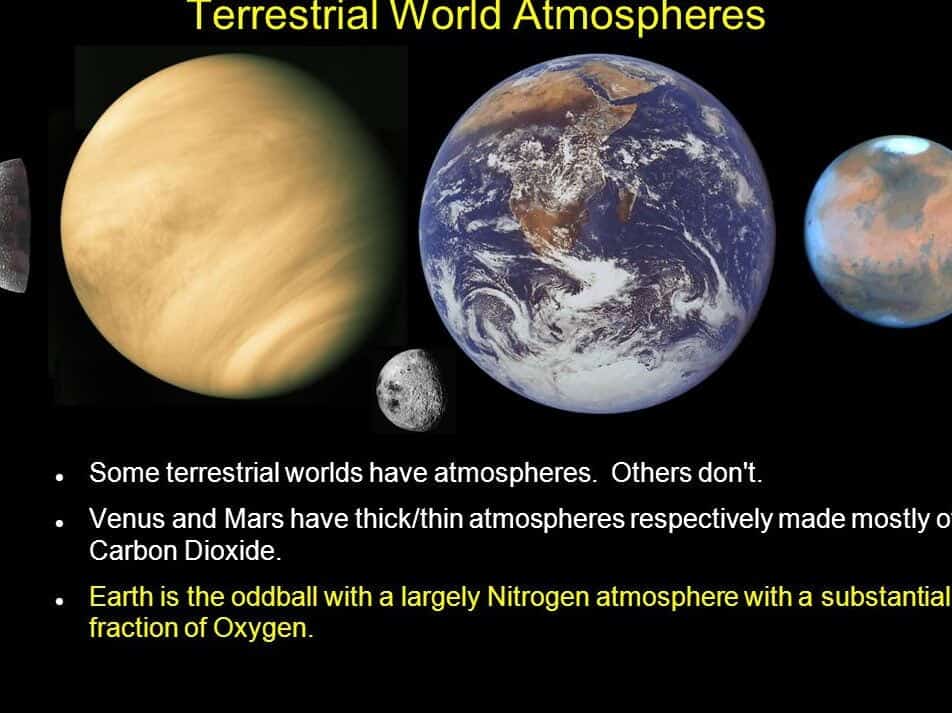Announcements regarding the potential discovery of habitable planets do not generate much excitement. Planets with atmospheres are quite common, with over two thousand already identified, and most of them bear striking similarities to our own Earth. However, when it comes to finding planets that closely resemble Earth, we are limited to only a handful. Nevertheless, even with these Earth-like planets, determining their habitability remains conditional, as it is crucial to define the specific types of life that scientists have in mind. This article presents a list of ten exoplanets that may be suitable for life. We will provide details about each planet’s atmosphere, environmental conditions, and how they differ from what we are accustomed to on Earth.
News regarding the potential habitability of planets is frequently embellished. Take, for instance, the unveiling of GJ1132b, which was initially heralded as the most momentous discovery in history. Granted, it is located closer to us than other exoplanets. However, labeling it as an Earth analog would be erroneous, if only due to the fact that its surface temperature is hundreds of degrees higher than that of Earth. Similarly, the announcements surrounding the revelation of Kepler 186f and Tau Ceti were highly touted, with the media dubbing them as our planet’s doppelgangers. Nevertheless, they do not possess the level of resemblance that scientists had hoped for.
A coefficient called ESI has been introduced to compare exoplanets based on their similarity to Earth. This coefficient ranges from 0 to 1 and reflects the level of similarity to our planet. In order to determine this coefficient, many factors are taken into account, including the quality of the atmosphere, density, temperature, and the speed required to escape the gravitational field. If the ESI exceeds 0.8, the celestial body is considered to be earth-like.
Now let’s take a look at the planets that rank highest in terms of this indicator. If you’re interested in starting your exploration of the cosmos closer to home, be sure to read the article “Where Does Space Begin?”.
Kepler 438b
can be rephrased as:
The exoplanet Kepler 438b
.
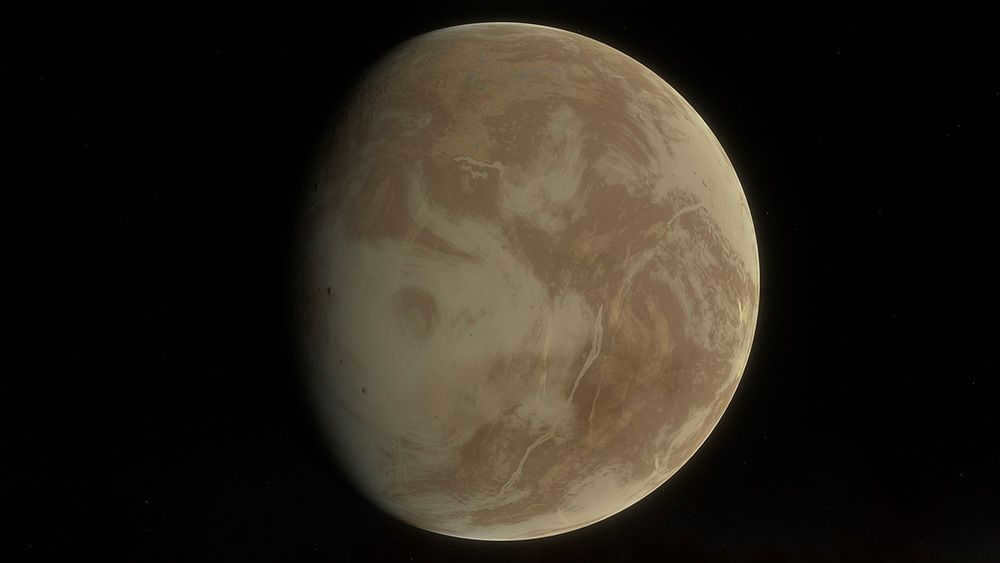
Gliese 667Cc
Unique Text:
Gliese 667Cc is an exoplanet that orbits the red dwarf star Gliese 667C, which is part of the Gliese 667 triple star system. This exoplanet is located approximately 22 light-years away from Earth in the constellation Scorpius.
The discovery of Gliese 667Cc was made by astronomers using the radial velocity method, which measures the slight wobble of a star caused by the gravitational pull of an orbiting planet. It was first announced in 2011 and quickly became one of the most intriguing exoplanets due to its potential habitability.
Gliese 667Cc is classified as a super-Earth, meaning it has a mass and radius larger than that of Earth but smaller than that of Uranus or Neptune. It orbits its host star at a distance that places it within the habitable zone, a region where liquid water could exist on the planet’s surface.
Despite its proximity to its host star, Gliese 667Cc receives only about 90% of the amount of sunlight that Earth receives from the Sun. This, combined with its orbit, gives the exoplanet a relatively mild climate, with temperatures that could potentially support the presence of liquid water.
Further studies of Gliese 667Cc have revealed that it is likely tidally locked, meaning one side of the planet is always facing its host star while the other side is in perpetual darkness. This could result in extreme temperature variations between the two sides of the planet.
Overall, Gliese 667Cc is a fascinating exoplanet that has captured the interest of scientists and astronomers. Its potential habitability and unique characteristics make it a valuable target for future research and exploration.
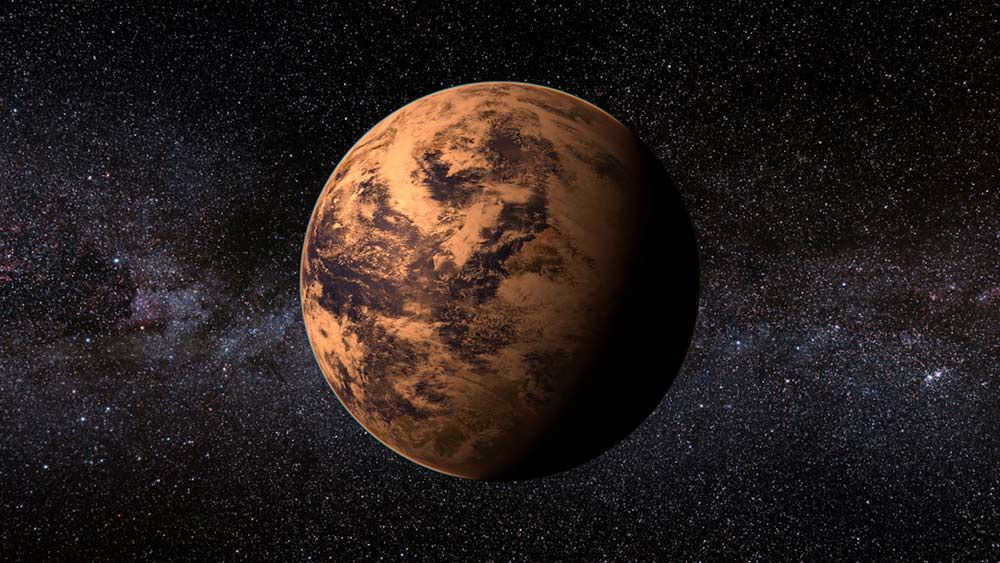

With a mass approximately 3.8 times that of Earth, 0.85 is a planet orbiting a red dwarf in a circular path. Situated 24 sv years away from us, it was discovered through radial velocity measurements which detected fluctuations in a specific region. These distortions were caused by the gravitational field of the exoplanet. Due to its lack of proximity to a luminous star, determining its size is impossible. Although it occupies the habitable zone of its system, the forming star is cold. It is presumed that the surface temperature is below 5 degrees Celsius.
Kepler 442b
is a planet that is often referred to as a “super-Earth” due to its size and composition. It is located in the constellation Lyra, approximately 1,120 light-years from Earth. With a radius about 1.34 times that of Earth, Kepler 442b is considered to be within the habitable zone of its star, meaning that it could potentially support liquid water on its surface. This has led to speculation that the planet may have the conditions necessary for life to exist. However, further research is needed to determine the planet’s atmospheric composition and other factors that may affect its habitability.
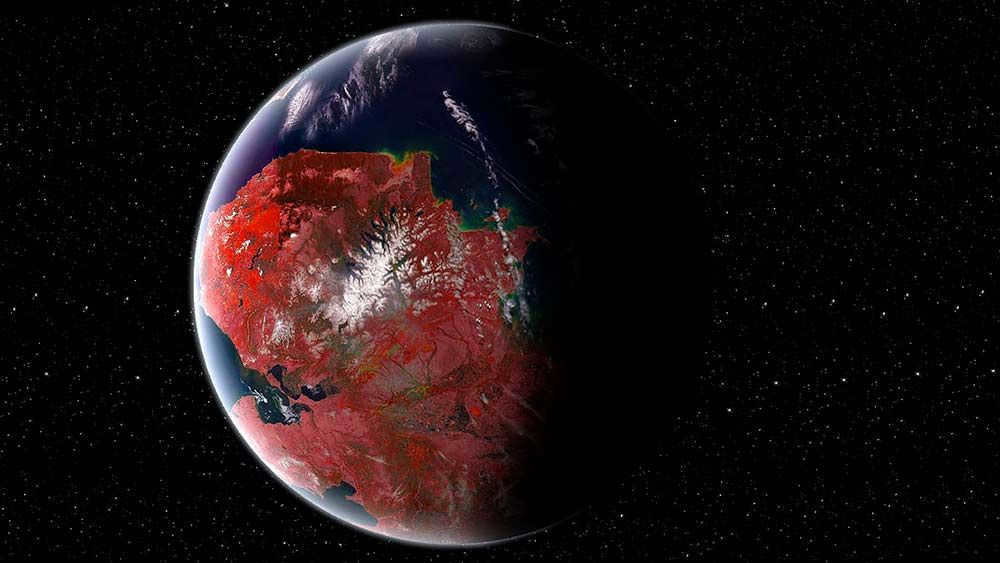
The Exoplanet Similarity Index (ESI) of this planet is 0.84, which is 1.3 times the diameter of Earth. The star it orbits is cooler than our sun, and it is located at a distance of 1100 light years. Scientists have determined that this planet is in the habitable zone because its orbital period is 112 days. However, it is important to note that the temperatures on this planet can drop to forty degrees below zero. While this may seem extreme, it is actually not as cold as the winter temperatures on Mars, which can reach as low as -125 degrees at the poles.
Kepler 62e and 62f
Kepler 62e and 62f are two exoplanets orbiting the star Kepler-62 in the constellation Lyra. They were discovered by NASA’s Kepler spacecraft in 2013 and are part of a five-planet system. These planets are of particular interest to scientists because they are located in the habitable zone of their star, where conditions may be suitable for liquid water to exist on their surfaces.
Kepler 62e is the innermost planet of the system and is roughly 60% larger than Earth. It orbits its star every 122 days and receives about 20% more sunlight than Earth. This makes it a prime candidate for further study as it may have a moderate greenhouse effect, leading to a potentially habitable environment.
Kepler 62f is the outermost planet of the system and is about 40% larger than Earth. It orbits its star every 267 days and receives about 10% less sunlight than Earth. While it is closer in size to Earth than Kepler 62e, its distance from the star places it on the outer edge of the habitable zone. This means that it may have a colder climate, but still has the potential for liquid water to exist.
Overall, Kepler 62e and 62f are fascinating exoplanets that offer the possibility of habitable environments beyond our solar system. Further observations and studies will help scientists better understand these distant worlds and the potential for life beyond Earth.
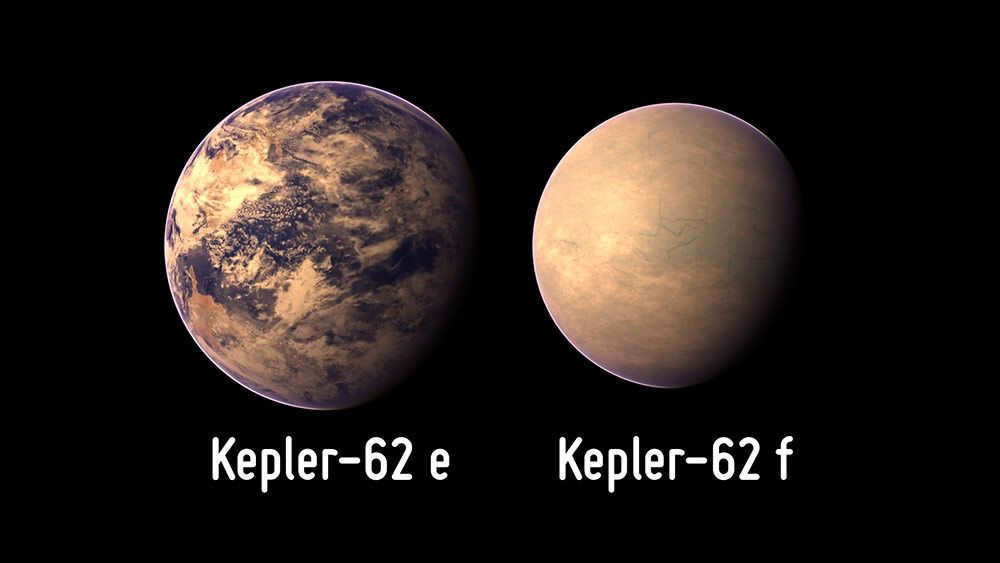
These planets were deliberately made detectable by the Kepler telescope when they passed in front of their star. They were named after the telescope that discovered them. These planets are located 1200 light years away from us. They are classified as cold planets with orbital periods of 122 and 267, making them similar to Earth. Their radii are 1.6 and 1.4 times larger than our planet, respectively. While their masses remain unknown, astronomers estimate that each planet is 30 times heavier than Earth. The temperature patterns on these planets allow for the existence of liquid water, although this also depends on the composition of their atmospheres.
Kepler 452b
Kepler 452b, also known as Earth’s “cousin,” is an exoplanet located approximately 1,400 light-years away from us. It was discovered by the Kepler space telescope in 2015 and is considered to be the most Earth-like planet found to date. With a diameter about 60% larger than Earth’s, Kepler 452b orbits its star in the habitable zone, meaning it is at a distance where liquid water could exist on its surface. This makes it a potential candidate for hosting life as we know it. However, due to the vast distance between us and Kepler 452b, further exploration and analysis are needed to determine its composition and atmospheric conditions. Nonetheless, the discovery of this exoplanet brings us one step closer to understanding the possibility of life beyond our own planet.
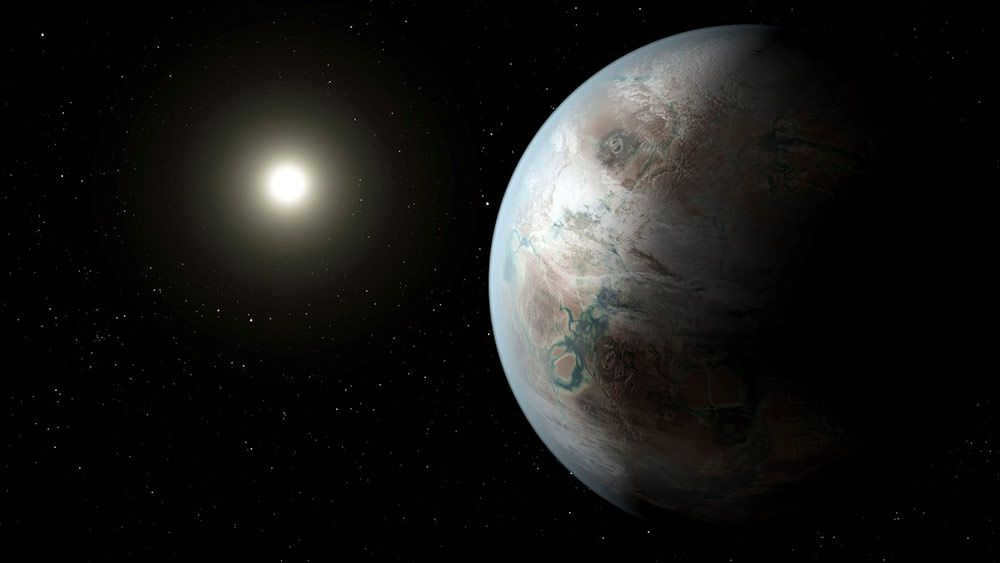
The first planet similar to ours was discovered in 2015 and had an index of 0.84, making it a significant find. It is located approximately 1400 light years away and orbits its own sun, completing a full revolution in 385 days. Due to its distance and faint glow, it is challenging to estimate its gravitational influence and mass. Scientists believe that the temperature on Kepler 452b ranges from -20 to +10 degrees Celsius, which is within the optimal range for supporting life.
You can find more interesting information about deep space astronomy in the article “Interesting facts about deep space astronomy”.
Kepler-283c
Reword the text to make it unique, using the English language, while preserving the HTML markup:
Kepler-283c
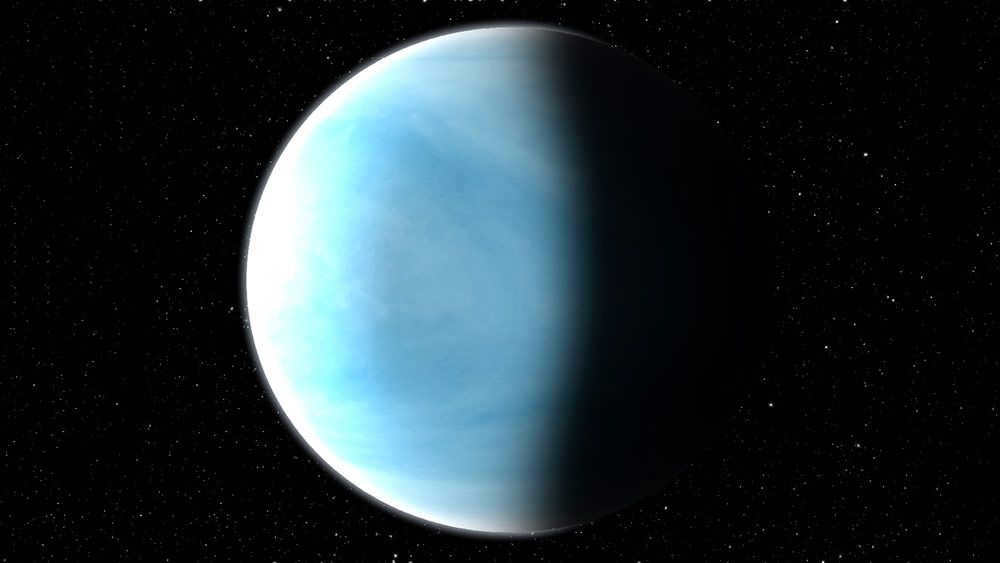
With a coefficient of 0.79, this planet is situated within the habitable zone of an orange dwarf star. It completes an orbit around its star in just 93 days. Although it is referred to as a warm super-Earth, the surface temperature of this planet is approximately -35 degrees Celsius. Upon its discovery, scientists initially deemed it to be potentially habitable.
Gliese 832 c
can be paraphrased as “The exoplanet Gliese 832 c”.
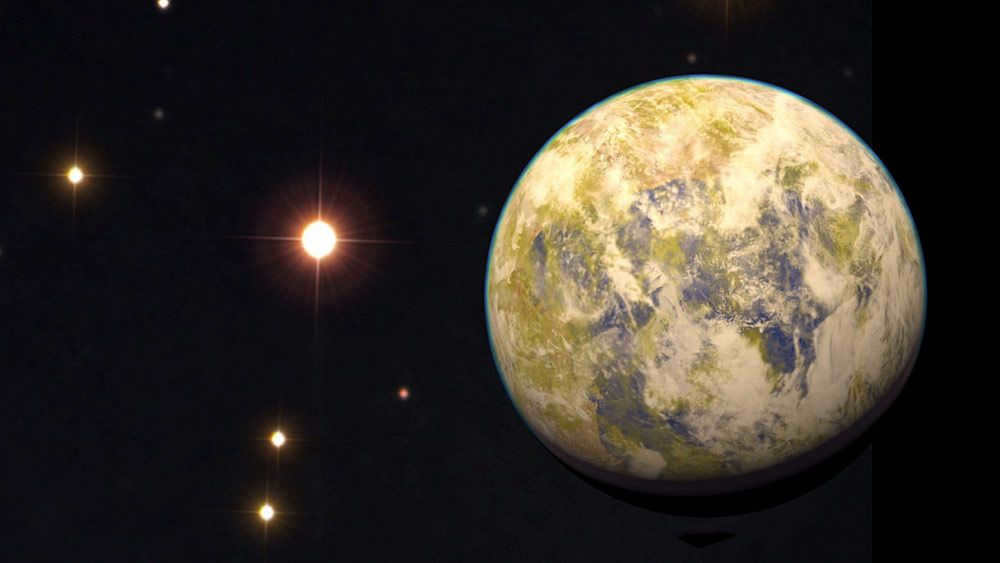
Discovered in 2014, this planet is located 16.1 light-years away from us. It has a similarity coefficient of 0.81 and is part of the Crane constellation. The planet orbits a red dwarf system called Gliese 832 and completes a revolution around its parent star every 36 days. While the planet’s temperature is similar to Earth’s, it experiences more pronounced fluctuations due to its rotation around the energy and heat source. As a result, the average temperature is relatively low, reaching about minus 20 degrees. It is worth noting that if the planet had a denser atmosphere, the temperature could be higher, potentially making the climate hotter and resembling that of Venus.
Proxima Centauri b
can be rephrased as
The exoplanet Proxima Centauri b
.
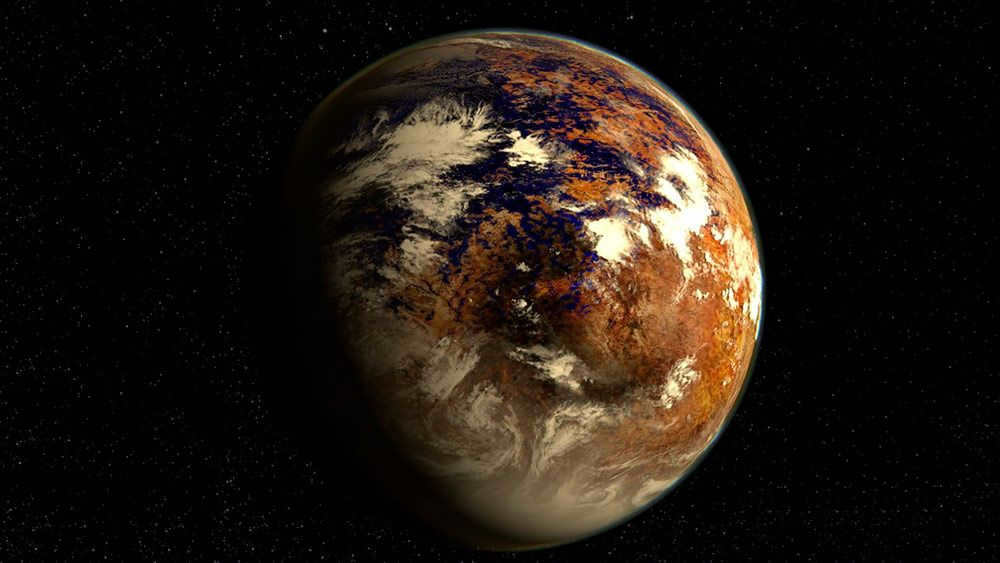
The exoplanet closest to our Sun that is similar to Earth and orbits around Proxima Centauri is a red dwarf. This exoplanet has a short orbital period of 11.2 days and is located just 4.2 light-years away from us. It is rated 0.87 out of 1 in terms of similarity to Earth. Despite being relatively close to its star, it is actually about 7 million kilometers away, which results in it receiving less heat due to the star’s low luminosity. In fact, this exoplanet receives 35% less light compared to our own planet. Therefore, it is possible that liquid water exists on this exoplanet.
Tau Ceti e.
Tau Ceti e is a unique exoplanet located in the Tau Ceti star system. This exoplanet is often referred to as a “super-Earth” due to its size and composition. It is roughly 1.7 times the size of Earth and is believed to have a rocky surface.
Tau Ceti e is located in the habitable zone of its star system, which means it could potentially support liquid water and have conditions suitable for life. Scientists believe that the planet may have a dense atmosphere, which could help regulate its temperature and make it more hospitable for life.
The discovery of Tau Ceti e has sparked interest and excitement among scientists and astronomers. It is one of the closest potentially habitable exoplanets to Earth, making it an intriguing target for future exploration and study.
Tau Ceti e.
Tau Ceti e is an exoplanet situated in the Tau Ceti star system, distinguished by its unique characteristics. Known as a “super-Earth,” this exoplanet has size and composition that sets it apart. With a diameter around 1.7 times that of Earth, Tau Ceti e is believed to possess a solid surface.
Tau Ceti e’s placement within the habitable zone of its star system makes it particularly fascinating. This means it may have the potential to sustain liquid water and provide conditions conducive to supporting life. Scientists hypothesize that the planet might have a dense atmosphere, which could help regulate temperatures and create a more hospitable environment for life.
The discovery of Tau Ceti e has generated considerable excitement and interest among scientists and astronomers. Its proximity to Earth and potential habitability make it an incredibly compelling subject for future exploration and research.
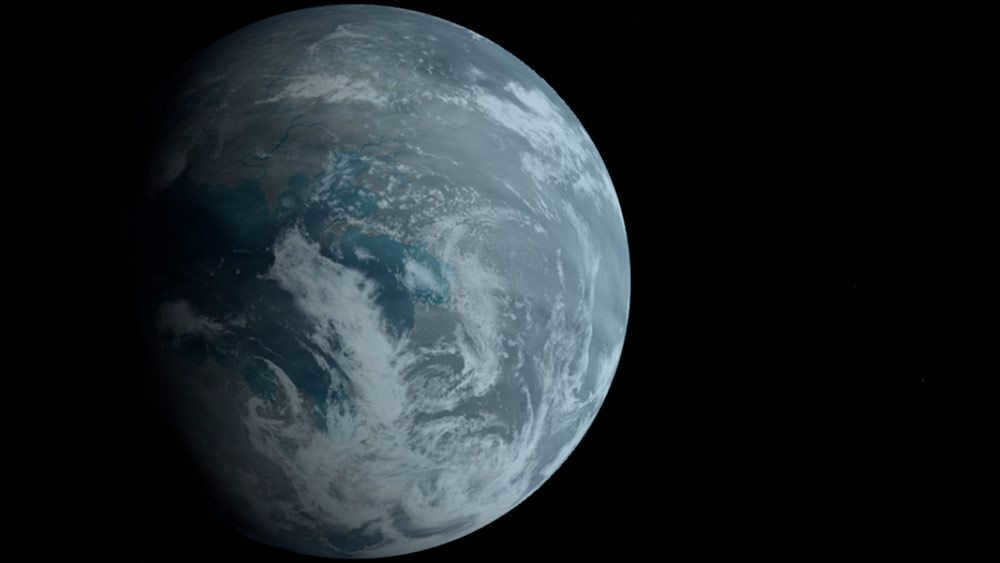
Situated within the constellation of Ceti, this planet boasts a correspondence ratio of 0.78 and is located a mere 12 light years away from us. It receives an impressive 60% more energy from its sun compared to our own. The atmosphere shares similarities with that of Venus- it is dense and allows limited light penetration, resulting in a substantial heat retention. Consequently, the average surface temperature hovers around 70 degrees Celsius. Scientists speculate that protozoan microorganisms might potentially thrive in the hot waters of local reservoirs. However, confirming this hypothesis remains a challenge, as the current fastest spacecraft would require over 200,000 years to reach Tau Whale.
The Red Planet
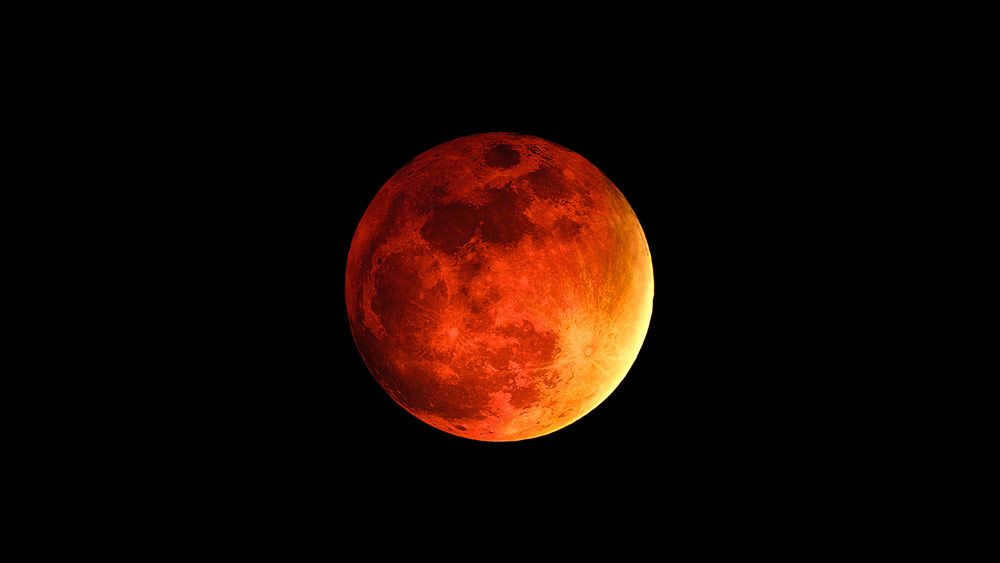
The ESI score falls below the threshold for being classified as earth-like, standing at just 0.64. Nonetheless, this planet within our solar system does share some intriguing similarities with Earth. However, the disparities between the two are quite significant. For instance, the planet’s atmosphere is approximately ten times smaller than that of Earth, primarily due to its weaker gravitational force. This results in fascinating atmospheric phenomena and frequent solar wind activity. Furthermore, the chemical composition of the atmosphere is predominantly carbon dioxide.
While these planets may have atmospheres similar to our own, it should be noted that not all of them are necessarily suitable for sustaining life. The habitability of a planet depends on a variety of factors, including the activity of the star system it belongs to and the positioning and movement of the exoplanets within that system. However, it is not out of the realm of possibility that one day scientists may indeed discover a planet that is nearly identical to Earth, complete with a star that closely resembles our own Sun.
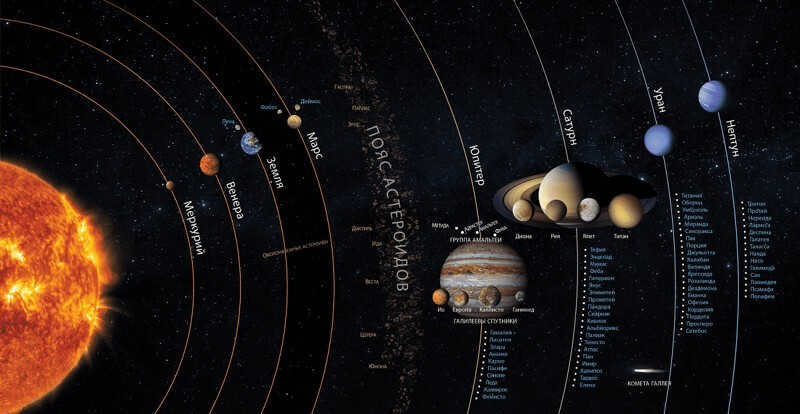
Indeed, even in the future, when taking a vacation near Jupiter becomes as ordinary as going to an Egyptian beach today, Earth will remain the top tourist destination. The explanation for this is straightforward: the weather here is consistently pleasant. Conversely, other planets and moons don’t enjoy such favorable conditions.
Mercury
can be rephrased as
The planet Mercury
.
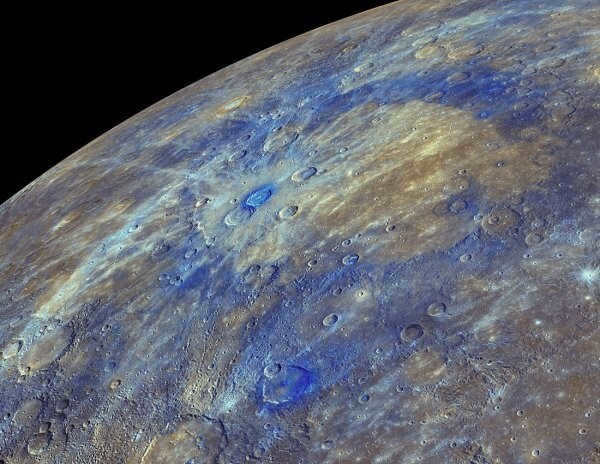
The surface of Mercury bears a striking resemblance to the lunar surface.
Despite lacking an atmosphere, Mercury does possess a distinct climate, which is primarily influenced by its close proximity to the scorching Sun. Due to the inefficiency of air and water in transferring heat across different regions of the planet, extreme temperature fluctuations occur.
On the sunlit side of Mercury, temperatures can soar to a scalding 430 degrees Celsius, capable of melting tin, while on the dark side, temperatures can plummet to a bone-chilling -180 degrees Celsius. In the midst of this intense heat, some craters remain perpetually shrouded in shadow, allowing pockets of ice to persist for millions of years.
The axis of rotation of Mercury is not inclined, unlike Earth, and is perfectly perpendicular to its orbit. As a result, there are no seasons on the planet, and the weather remains the same throughout the year. Moreover, a single day on Mercury lasts approximately one and a half Earth years.
Venus
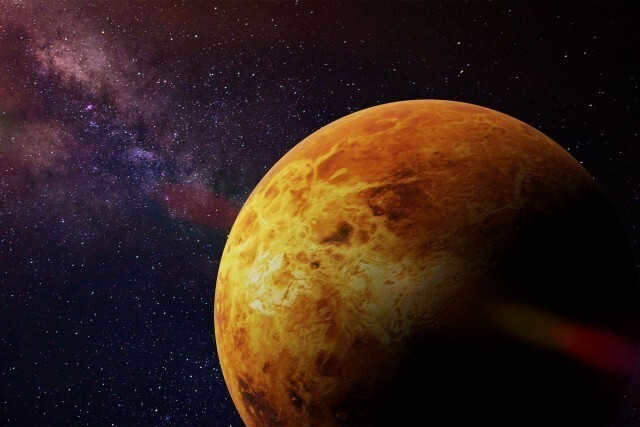
Let’s be honest: Venus is not the ideal planet. Sure, in the morning sky, it truly shines like a flawless jewel. However, that perception quickly changes once you delve deeper into its characteristics. Venus serves as a stark example of the extreme consequences of the greenhouse effect.
The atmosphere of Venus is incredibly dense, turbulent, and hostile. Comprised mainly of carbon dioxide, it absorbs more solar energy than even Mercury, despite being much further from the Sun. Consequently, the planet becomes even hotter: with temperatures hovering around 480 degrees Celsius year-round. Combine this with atmospheric pressure that can only be experienced on Earth by diving a kilometer below the ocean’s surface, and it’s safe to say that Venus is not a desirable destination.
However, the complete reality regarding the unpleasant nature of Beauty is far more complex. In the outer layer of Venus, there is a constant eruption of powerful volcanoes, which results in the continuous release of soot and sulfur compounds into the atmosphere. These compounds swiftly transform into sulfuric acid, causing the planet to experience acid rain. This rain is truly acidic, capable of inflicting harm to the skin and damaging photographic equipment utilized by visitors.
However, visitors would find it impossible to stand upright and capture a photograph in this location: the atmosphere of Venus rotates at a much faster speed than the planet itself. While on Earth, it takes almost a year for the air to complete a full circle around the planet, on Venus, it only takes four hours, resulting in a constant hurricane-force wind. It is not surprising that even specifically designed spacecraft have not been able to survive for more than a few minutes in this extreme climate. Fortunately, our home planet does not experience such conditions. Our environment is free from harsh weather, which is something that brings us joy.
The Red Planet
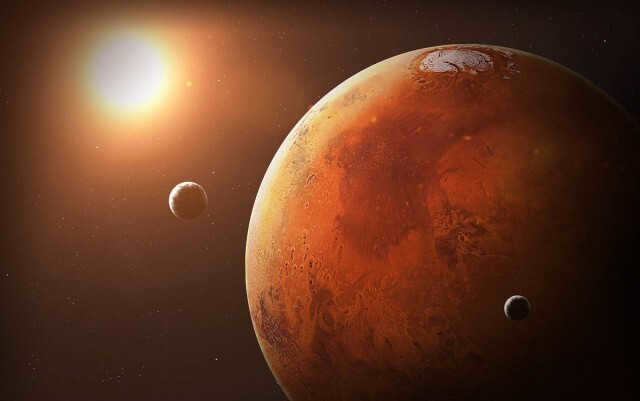
In recent years, exciting discoveries have been made on the Red Planet, indicating that Mars had a significantly different environment in the distant past. Billions of years ago, it boasted a moist climate, a thriving atmosphere, and expansive bodies of water. Evidence of ancient coastlines can still be found in certain locations, but present-day Mars is an inhospitable place. Today, it is a desolate, frozen desert, plagued by occasional intense dust storms.
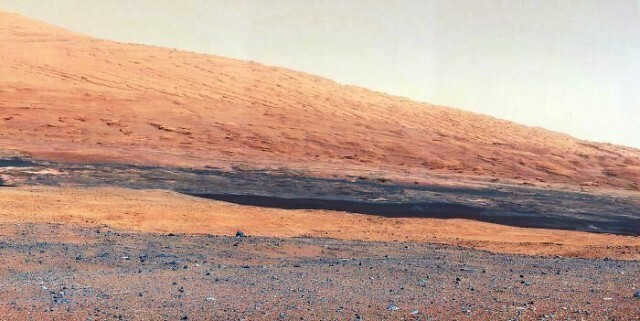
The planet Mars lacks a dense atmosphere capable of retaining heat and water. The exact reason for its disappearance remains unclear, but it is likely due to Mars’ relatively weak gravitational pull. With a size approximately half that of Earth, Mars has nearly three times less gravity.
This lack of atmosphere results in extremely cold temperatures at the poles, where polar caps made primarily of frozen carbon dioxide, or “dry snow,” exist. It is worth noting, however, that near the equator, the daytime temperature can be quite comfortable at around 20 degrees Celsius. Nevertheless, temperatures still drop to several tens of degrees below zero at night.
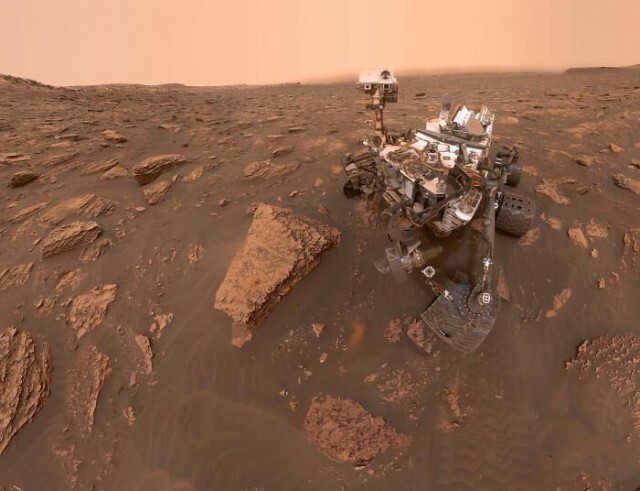

Despite the rather weak atmosphere of Mars, it is not uncommon to experience snow storms at its poles and dust storms in other parts. The planet is also prone to samums, khamsins, and other intense desert winds that carry countless tiny grains of sand. These winds, which are only found in certain regions on Earth, have the ability to engulf the entire planet of Mars, rendering it unphotographable for several days at a time.
Jupiter
Jupiter is the fifth planet from the Sun and the largest planet in the Solar System. It is a gas giant with a mass one-thousandth that of the Sun, but two and a half times that of all the other planets in the Solar System combined. Jupiter is one of the brightest objects visible to the naked eye in the night sky and has been known to astronomers since ancient times. It is named after the Roman god Jupiter. When viewed from Earth, Jupiter can be seen with the naked eye, but binoculars or a small telescope are needed to observe details such as its bands and moons. Jupiter is primarily composed of hydrogen and helium. The planet has a strong magnetic field and numerous moons, including the four largest known as the Galilean moons. Jupiter has a turbulent atmosphere with distinct cloud bands and a huge storm known as the Great Red Spot. The planet’s rapid rotation causes it to have a flattened shape, with an equatorial bulge and polar flattening. Jupiter is known for its unique features and continues to be a subject of study for scientists around the world.
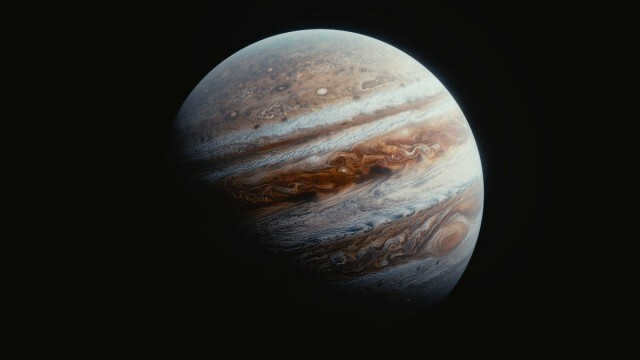
Observing Jupiter’s storms does not require a high-powered telescope. One of the most remarkable storms on the planet is the Great Red Spot, which has remained active for centuries and is three times the size of Earth. However, its reign as the largest storm may soon come to an end. Recently, astronomers have discovered a new vortex on Jupiter called the VA Oval. Although it is currently smaller than the Great Red Spot, it is growing at an alarming rate.
Jupiter is not a destination for thrill-seeking travelers. The planet experiences constant hurricane-like winds that span its entire surface, reaching speeds of up to 500 km/h. These winds often move in opposite directions, creating terrifying turbulent vortices at their boundaries, such as the well-known Great Red Spot and Oval VA.
In addition to the bone-chilling temperatures of less than -140 degrees Celsius and the overwhelming force of gravity, it is important to keep in mind another fascinating aspect – there is no solid ground to tread upon on the majestic planet of Jupiter. Being a gas giant, Jupiter lacks any discernible solid surface. Even if an adventurous skydiver were to attempt a daring dive into its atmosphere, they would find themselves immersed in the semi-liquid depths of the planet, where the immense gravitational pull gives rise to extraordinary matter, such as the mesmerizing superfluid metallic hydrogen.
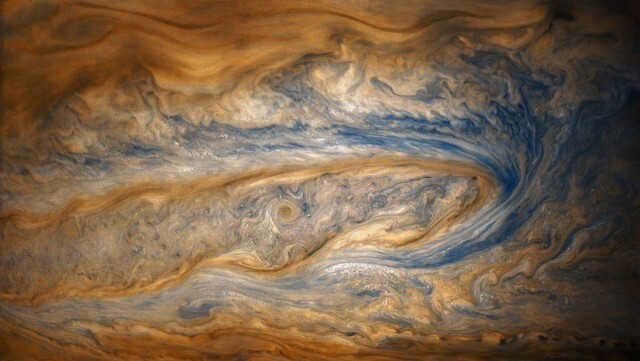
However, regular divers should take note of one of Jupiter’s largest moons, Europa. Out of Jupiter’s many moons, at least two could potentially become popular tourist destinations in the future.
For instance, Europa is completely covered by a saltwater ocean. Divers here have complete freedom to explore, with depths reaching up to 100 kilometers, as long as they can break through the icy surface that envelops the entire moon. The possibilities of what the future successor to Jacques-Yves Cousteau could discover on Europa are unknown, but some planetologists speculate that conditions suitable for life may exist here.
Io, yet another moon of Jupiter, is sure to capture the attention of photobloggers. The intense gravitational pull from its massive neighboring planet causes constant distortion and compression of the moon’s surface, resulting in extreme heating of its interior. This tremendous energy is released through geologic activity, fueling a multitude of active volcanoes. Due to the moon’s relatively weak gravitational force, eruptions produce breathtaking lava flows that shoot up into the sky for hundreds of kilometers. Photographers will have the opportunity to capture truly mesmerizing images!
Saturn
is a planet in our solar system. It is the sixth planet from the Sun and is known for its beautiful ring system. Saturn is a gas giant and is made up mostly of hydrogen and helium. It has a diameter of about 120,536 kilometers and is the second largest planet in our solar system. Saturn is also known for its many moons, with over 80 currently identified. Some of its moons, like Titan, have even been found to have their own atmospheres. Overall, Saturn is a fascinating planet with its unique ring system and diverse moon population.
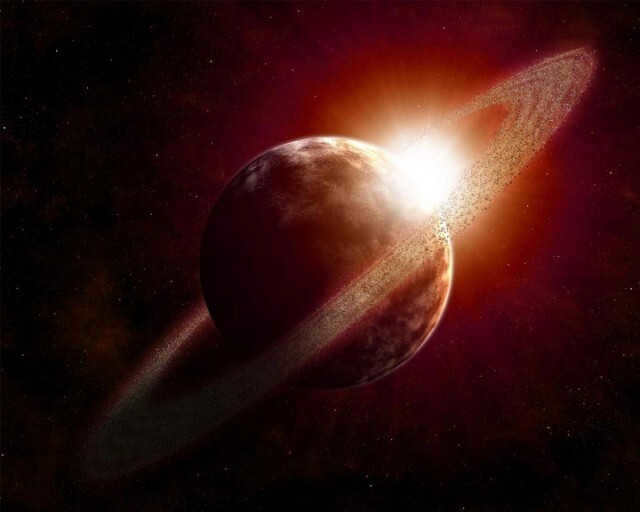
Saturn is undeniably captivating when it comes to photography, thanks to its magnificent rings. Of particular interest is a peculiar storm located at the planet’s north pole, taking the form of an almost perfect hexagon with sides measuring nearly 14 thousand kilometers.
However, Saturn is far from being an ideal vacation destination. Similar to Jupiter, it is a gas giant, albeit with even harsher conditions. The atmosphere here is frigid and dense, and local hurricanes can travel at speeds surpassing the sound barrier and even faster than a bullet, reaching velocities of over 1600 km/h.
However, Titan’s climate has the potential to draw in a multitude of oligarchs. The remarkable aspect, though, lies not in the pleasantness of the weather. Titan stands as the sole celestial entity known to host a liquid cycle, akin to Earth’s. The difference is that liquid hydrocarbons take on the role of water on this moon.
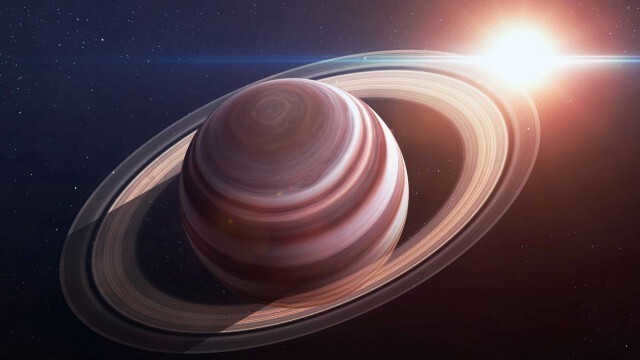
In the solar system, the planets have different types of atmospheres. For example, on Titan, the main wealth of the country is natural gas and other combustible compounds, which are present in abundance in liquid form. The temperature on Titan is extremely cold, reaching -162 degrees Celsius. Methane gas can be found swirling in the clouds and raining down, filling rivers that eventually flow into seas. It is important to handle this resource carefully and avoid overpumping.
Uranium
Uranium is a chemical element with the symbol U and atomic number 92. It is a silvery-grey metal in the actinide series of the periodic table. A uranium atom has 92 protons and 92 electrons, of which 6 are valence electrons. Uranium is weakly radioactive because all isotopes of uranium are unstable; the half-lives of its naturally occurring isotopes range from 159,200 years to 4.5 billion years. Uranium has the highest atomic weight of the primordially occurring elements. Its density is about 70% higher than that of lead, and slightly lower than that of gold or tungsten.
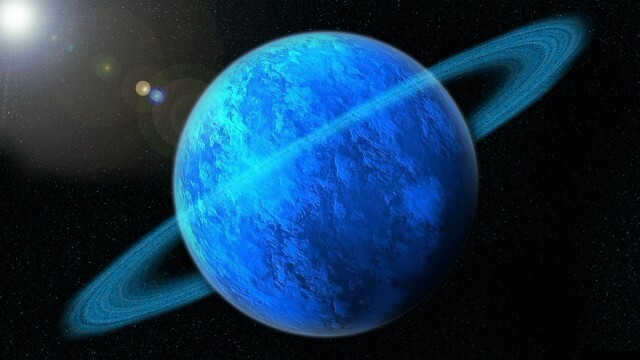
Out of all the planets in our solar system, Uranus is not the farthest, but it holds the title for being the coldest. The temperature here can plummet to an uncomfortable -224 degrees Celsius, which is only slightly warmer than absolute zero. One peculiar feature of Uranus is its unique rotation; it spins on its side, possibly due to a collision with a large celestial object. As a result, the planet’s north pole faces the Sun. Besides the occasional powerful hurricanes, there isn’t much else to observe on this icy planet.
Neptune and Triton
Neptune and Triton are celestial bodies in our solar system. Neptune is the eighth planet from the Sun and is known for its beautiful blue color. Triton is Neptune’s largest moon and is unique because it orbits the planet in a backward direction. Both Neptune and Triton have been studied extensively by scientists, who have made many fascinating discoveries about these intriguing celestial objects.
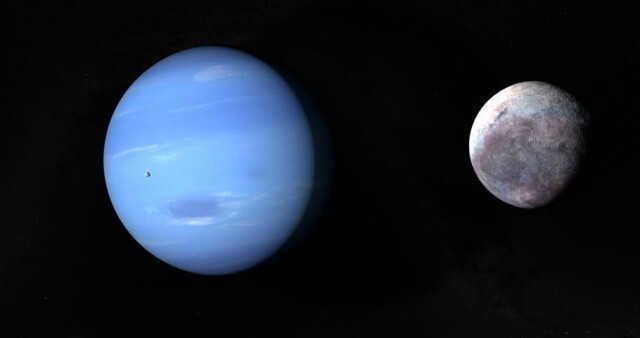
Similar to the rest of the gas giants, Neptune is an incredibly chaotic destination. The storms on this planet can grow to be larger than our own and travel at an incredible speed of nearly 2500 km/h. However, besides these extreme weather patterns, Neptune is quite uneventful. Although it may not be the most exciting place to visit, one of its moons, Triton, adds a unique element to the experience.
Generally speaking, Triton is as frigid and monotonous as its celestial body, but tourists are always captivated by its transient and ephemeral nature. Triton is just one example of this phenomenon: the moon is gradually drawing closer to Neptune, and eventually, it will be torn apart by the planet’s gravitational pull. Some of the fragments will crash onto the planet’s surface, while others may form a ring similar to Saturn’s. The exact timing of this event is still uncertain, estimated to occur in approximately 10 or 100 million years. Therefore, it is advisable to hurry and witness Triton – the renowned “Dying Satellite”.
Pluto
can be paraphrased as
The dwarf planet Pluto
.
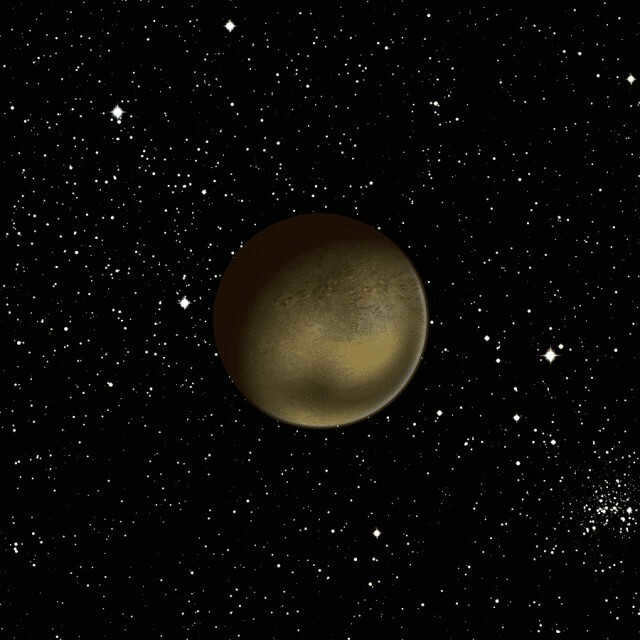
Stripped of the prestigious title of a planet, Pluto has been relegated to the status of a dwarf planet. However, we can confidently state that it is an incredibly peculiar and inhospitable celestial body. What sets Pluto apart is its highly elongated and oval-shaped orbit, which results in a year on Pluto lasting nearly 250 Earth years. Over the course of this extended period, the weather on Pluto undergoes significant changes.
During its winter, Pluto becomes completely frozen. As it moves closer to the Sun, it gradually warms up. The surface ice, composed of methane, nitrogen, and carbon monoxide, begins to evaporate, giving rise to a thin atmosphere. For a brief period, Pluto assumes the characteristics of a full-fledged planet while also resembling a comet. Due to its small size, the gas is not retained by Pluto but instead gets carried away, creating a distinctive tail. This behavior is not observed in conventional planets.
All of these unusual weather patterns are quite understandable. Life originated and flourished specifically under terrestrial conditions, so the local climate is nearly perfect for us. Even the most extreme Siberian cold snaps and tropical storms seem like mere child’s play when compared to what awaits vacationers on Saturn or Neptune. Therefore, our advice for the future is this: don’t waste your long-awaited days of relaxation in these exotic locations. It is wiser to take care of our own cozy planet so that even in the future when interplanetary travel becomes a possibility, our descendants can still enjoy a vacation on an Egyptian beach or simply outside the city by a pristine river.
Planet Earth
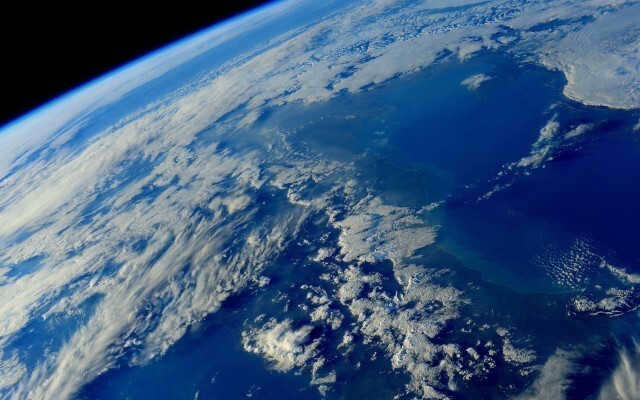
The Universe is limitless and continually expanding. Within its vastness, which is also in perpetual motion, lies the Milky Way galaxy. Inside this galaxy, there exists a solar system, with the Sun at its center, providing illumination and warmth to the planets. This star has been generating immense amounts of energy within itself and on its surface for millions of years, resulting in an incredibly high temperature. The star’s mass is so immense that it exerts a gravitational force, causing the 8 planets to revolve around it in nearly fixed paths. Each planet possesses its own unique characteristics in terms of structure, atmosphere composition, distinctive visible features, and varying numbers of satellites. However, it is only on one of these planets that life has originated.
The planet’s ability to support life is a result of its ideal distance from the Sun. This crucial factor provides a livable temperature, allows for water to exist in all three states, and influences the various forces that impact everything on Earth, both on the surface and deep within.
Over 4.5 billion years ago, our planet came into existence. Through countless transformations in its structure, surface features, atmospheric composition, and hydrosphere, Earth has become the perfect habitat for the first and only known life forms. This occurred approximately 4.2 billion years ago. Since then, life has continuously evolved and adapted to the ever-changing conditions of our planet.
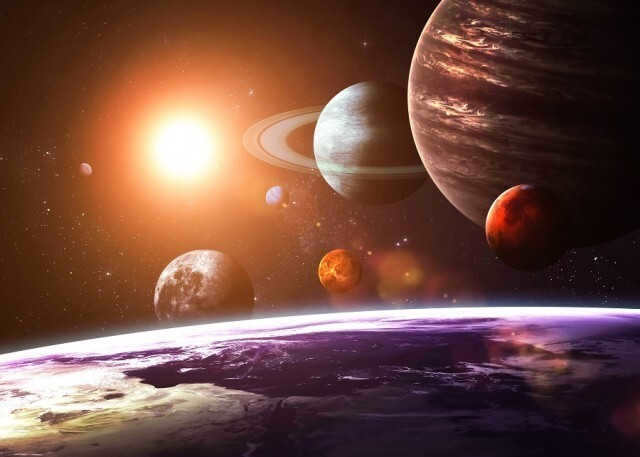
Over the course of numerous millennia, the planet has undergone significant transformations, resulting in a distinct appearance from its original state. The tectonic plates remain in constant, albeit gradual, motion, which plays a crucial role in shaping the planet’s features. This movement influences the positioning of continents, the formation of mountain ranges, the emergence of geysers and volcanoes, the configuration of oceans, and the presence of seas, rivers, and underground water. Furthermore, plate tectonics also have a direct impact on the climate of continents, compelling all living organisms to either adapt, evolve, or face extinction in response to the changing conditions.
The Earth’s surface is shielded by a relatively thin layer of ozone, which envelops the planet’s atmosphere. This crucial layer acts as a protective barrier, safeguarding all life on Earth from the harmful radiation emitted by the Sun. The World Ocean encompasses approximately 70-71% of the planet’s surface, while the remaining portions are comprised of continents, islands, and peninsulas. Below the surface lies a substantial layer known as the mantle, which encompasses the Earth’s magnetic field source, the outer core. Within the mantle lies the inner core, which is believed to primarily consist of nickel and iron.
Regrettably, the planet is being harmed by the technical advancements that mankind takes pride in. Factories are polluting the water, air, and land, while the testing of atomic weapons is causing a catastrophic destruction of the ozone layer. Throughout billions of years, the Earth has supported life, but it is now in the hands of humanity to decide how much longer this will continue.
Outer space experiences a frigid temperature of -270.45 degrees Celsius.

Outer Space
Our home planet is Earth, and it no longer astonishes us when liquid falls from the heavens. We have grown accustomed to the sight of massive cumulus clouds that originate from water vapor and subsequently disintegrate, resulting in heavy rain showers.
Similarly, other celestial bodies in our solar system also generate clouds and experience precipitation. However, these clouds are typically composed of substances other than water. Each individual planet possesses its own distinctive atmosphere, thereby giving rise to distinct weather patterns.
Mercury’s Climate
Mercury, the planet closest to the Sun, presents a unique and desolate landscape. Its surface is riddled with craters, and the daytime temperatures can reach a scorching 430 degrees Celsius. Due to its extremely thin atmosphere, it is nearly impossible to detect any signs of weather on Mercury. Clouds and rain are nonexistent on this barren planet.
In contrast, our neighboring planet Venus boasts a strikingly different climate. Its thick and powerful cloud cover is often illuminated by dazzling bolts of lightning. Prior to the exploration of Venus’ surface, scientists theorized that it might harbor lush, swampy areas teeming with vegetation. However, we now know that Venus is devoid of any plant life, instead featuring a landscape dominated by rocks and extreme temperatures that can soar up to 480 degrees Celsius at noon.
Weather conditions on the Red Planet
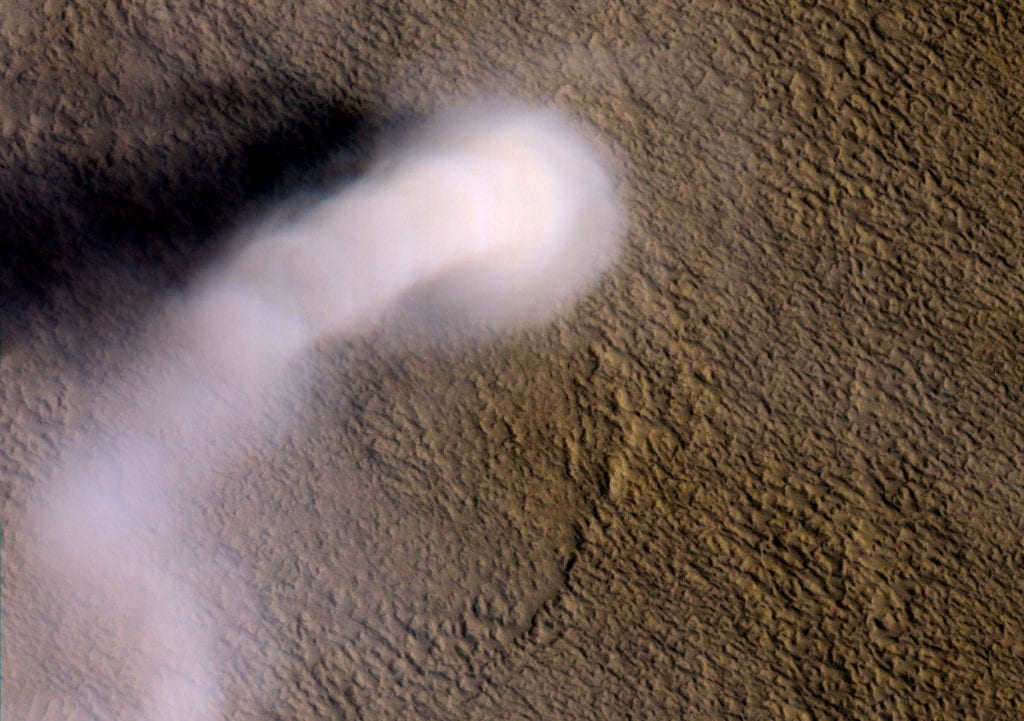
Mars, known as the fourth planet in our solar system, is believed by scientists to have had similar natural conditions to Earth in ancient times. Currently, Mars has a remarkably thin atmosphere and its surface, as depicted in photographs, bears a resemblance to the deserts found in the south-western regions of the United States. During the winter season on Mars, a delicate layer of frozen carbon dioxide clouds forms over the red plains and frost blankets the rocks. In the mornings, the valleys become engulfed in thick fog, sometimes resembling a downpour.
However, the river channels that mark the terrain of Mars have since dried up. Scientists speculate that in the distant past, water used to course through these channels. It is believed that billions of years ago, Mars had a more substantial atmosphere and experienced intense precipitation. Today, traces of that aqueous abundance can be found primarily in the polar regions, forming a delicate veneer and collecting in fissures and gaps within the Martian soil.
Weather Conditions on Jupiter
Jupiter, the celestial body located fifth in line from the Sun, differs from Mars in every conceivable manner. It takes the form of an enormous, revolving mass of gas, primarily consisting of hydrogen and helium. Conceivably, a minuscule, solid nucleus may exist deep within, concealed by a vast expanse of liquid hydrogen.
Weather Patterns on Saturn
Saturn, a colossal planet akin to Jupiter, exhibits comparable atmospheric conditions. During the Voyager mission, scientists identified a powerful thunderstorm on Saturn, spanning an expansive area of approximately 100,000 square kilometers.
Uranus Weather Conditions
Uranus, a gas giant, is enveloped in powerful clouds. These clouds, which contain methane, bear a striking resemblance to Earth’s thunderclouds but on a much larger scale. They gather in the sky of Uranus, resembling massive anvils. It is possible that liquid methane droplets precipitate from these clouds but evaporate before reaching the planet’s surface.
Weather on Neptune and Pluto
Neptune, a distant gaseous planet, remains shrouded in mystery. While we are aware that its clouds consist of frozen methane, we have limited knowledge about the weather patterns on Neptune. Pluto, located 5.8 billion kilometers away from the Sun, is an enigmatic world that remains largely unexplored.
However, precipitation is not limited to the nine planets in our solar system. On Saturn’s moon, Titan, reddish clouds release methane “snowflakes” that descend into a vast ocean of methane or nitrogen. Additionally, there may be gasoline showers in Titan’s atmosphere. It is possible that in the future, robotic ships will navigate the seas of Titan.
Weather conditions on the different planets of our solar system
If you happen to come across any inaccuracies, kindly select the text and hit Ctrl+Enter.
The Sun, along with eight out of the nine planets (excluding Mercury), and three out of the sixty-three satellites, possess atmospheres. Each atmosphere has its own unique chemical composition and exhibits specific weather patterns known as “weathering.” These atmospheres can be categorized into two groups: terrestrial-type planets have solid landmasses or vast bodies of water that influence the conditions at the lower edge of the atmosphere, whereas gas giants possess atmospheres that extend infinitely.
1.Mercury has a nearly non-existent atmosphere – solely a remarkably thin layer of helium that is equivalent in density to the atmosphere of Earth at an elevation of 200 km. It is likely that this helium is produced through the decay of radioactive elements within the planet’s interior. Mercury possesses a feeble magnetic field and lacks any natural satellites.
2. The main components of Venus’s atmosphere are carbon dioxide (CO2), nitrogen (N2), and water vapor (H2O), with small traces of hydrochloric acid (HCl) and hydrofluoric acid (HF). The surface of Venus experiences a pressure of 90 bar, equivalent to the pressure found at a depth of 900 m in Earth’s seas. The temperature remains around 750 K throughout the day and night. The high surface temperature on Venus is not accurately referred to as the “greenhouse effect.” This is because while the sun’s rays can easily penetrate the atmosphere and heat the planet’s surface, the thermal infrared radiation emitted by the surface encounters difficulty in escaping back into space.
3. Mars has a unique and rarefied atmosphere, composed mostly of carbon dioxide (95%) and nitrogen (3%). It also contains small amounts of water vapor, oxygen, and argon. The surface of Mars experiences an average pressure of 6 mbar, which is only 0.6% of Earth’s pressure. Due to this low pressure, liquid water cannot exist on Mars. The daily average temperature is 240 K, but during the summer at the equator, it can reach a maximum of 290 K. The temperature fluctuates by about 100 K on a daily basis. As a result, Mars has a climate similar to that of a cold and dehydrated desert found at high altitudes.
4. When observing Jupiter through a telescope, one can observe cloud bands that run parallel to the equator. These bands consist of bright areas that are interspersed with reddish belts. It is believed that the bright zones represent regions where upward flows occur, allowing the tops of ammonia clouds to become visible. On the other hand, the reddish belts are associated with downward flows, and their bright color is determined by the presence of ammonium hydrosulfate, as well as compounds such as red phosphorus, sulfur, and organic polymers. In addition to hydrogen and helium, spectroscopic analysis of Jupiter’s atmosphere has also detected the presence of CH4, NH3, H2O, C2H2, C2H6, HCN, CO, CO2, PH3, and GeH4.
5. When observed through a telescope, Saturn’s appearance is not as striking as Jupiter’s. It is characterized by a brownish-orange color and indistinct belts and zones. This is due to the presence of light-scattering ammonia (NH3) fog in the upper regions of Saturn’s atmosphere. Unlike Jupiter, Saturn is located farther from the Sun, resulting in a lower temperature (90 K) in its upper atmosphere compared to Jupiter (which is 35 K higher). As a result, the ammonia in Saturn’s atmosphere is in a condensed state. Similarly to Jupiter, the temperature in Saturn’s atmosphere increases by 1.2 K per kilometer of depth. Therefore, the cloud structure in Saturn’s atmosphere is similar to Jupiter’s, with a layer of ammonium hydrosulfate clouds followed by a layer of water clouds. In addition to hydrogen and helium, spectroscopic analysis has also detected the presence of CH4, NH3, C2H2, C2H6, C3H4, C3H8, and PH3 in Saturn’s atmosphere.
6.Uranus’s atmosphere is primarily composed of hydrogen, with helium making up 12-15% and a small amount of other gases. The temperature of the atmosphere is approximately 50 K, but in the upper, less dense layers, it reaches 750 K during the day and drops to 100 K at night.
7.Scientists have observed the presence of the Great Dark Spot and a intricate network of vortexes within Neptune’s atmosphere.
8. Pluto’s orbit is highly elongated and inclined, with its closest approach to the Sun at 29.6 a.u. at perihelion and its farthest distance at 49.3 a.u. at aphelion. In 1989, Pluto reached perihelion and was actually closer to the Sun than Neptune from 1979 to 1999. However, due to its significant orbital inclination, Pluto’s path never crosses with that of Neptune. The average surface temperature of Pluto is 50 K, which changes by 15 K from aphelion to perihelion, resulting in noticeable temperature variations at such low temperatures. As a result, Pluto has a sparse methane atmosphere at perihelion, although its pressure is 100,000 times lower than that of Earth’s atmosphere. Despite its unique atmosphere, Pluto is unable to retain it for long periods of time due to its smaller size compared to the Moon.
Earth is a celestial body situated 150 million kilometers away from the Sun in our solar system. It rotates around the Sun with an average velocity of 29.765 kilometers per second. Its complete revolution around the Sun takes approximately 365.24 solar days. The moon, Earth’s natural satellite, orbits at a distance of 384,400 kilometers. The inclination of the Earth’s axis to the ecliptic plane is 66° 33″ 22″, and it takes 23 hours 56 minutes 4.1 seconds for the Earth to complete one revolution around its axis. The Earth has a geoid-like shape, with an equatorial radius of 6378.16 km and a polar radius of 6356.777 km. Its surface area is approximately 510.2 million km^2. The Earth’s mass is 6 * 10^24 kg, and its volume is 1.083 * 10^12 km^3. The Earth’s gravitational field is responsible for the existence of its atmosphere and gives the planet its spherical shape.
The Earth has an average density of 5.5 g/cm3, which is nearly twice the density of surface rocks (around 3 g/cm3). Density increases as you go deeper into the Earth. The core, which is in a molten state, is the inner part of the lithosphere. Research has shown that the core is divided into two zones: the inner core (with a radius of about 1300 km), which is likely solid, and the outer core (with a radius of about 3400 km), which is liquid. The solid shell is also not uniform, and there is a distinct boundary at a depth of approximately 40 km known as the Mohorovicich surface. The area above this surface is called the crust, while the area below it is called the mantle. The mantle, like the crust, is solid except for some pockets of lava. As you go deeper into the mantle, its density increases from 3.3 g/cm3 at the Mohorovichi surface to 5.2 g/cm3 at the boundary with the core. At the core boundary, the density jumps to 9.4 g/cm3. The density at the center of the Earth ranges from 14.5 g/cm3 to 18 g/cm3. At the lower boundary of the mantle, the pressure reaches 1,000,000 atm. When descending into mines, the temperature rises rapidly at a rate of about 20°C per kilometer. The temperature at the center of the Earth is estimated to be no more than 9000°C. Since the rate of temperature increase with depth decreases as you approach the center of the Earth, heat sources must be concentrated in the outer parts of the lithosphere, likely in the mantle. The only conceivable cause of mantle warming is radioactive decay. 71% of the Earth’s surface is covered by oceans, making up the majority of the hydrosphere. Earth is the only planet in the solar system with a hydrosphere. The hydrosphere provides water vapor to the atmosphere, which plays a significant role in the greenhouse effect and raises the Earth’s average surface temperature by about 40°C. The presence of the hydrosphere has played a vital role in the development of life on Earth.
The Earth’s atmosphere at sea level consists of approximately 20% oxygen and 80% nitrogen. It is believed that the current composition of the atmosphere is significantly different from its original composition 4.5 billion years ago when the Earth’s crust was formed. The presence of plants, animals, and microorganisms in the biosphere has had a significant impact on the overall nature of our planet and the chemical makeup of its atmosphere.
The Moon
The Moon has a diameter that is 4 times smaller than that of Earth and a mass that is 81 times smaller. It is the celestial body that is closest to Earth.
Unlike Earth, the Moon has a lower density of 3.3 g/cm3. It does not have a core, but its interior maintains a constant temperature. The surface of the Moon experiences significant temperature variations, ranging from +120°C at the sunrise point to -170°C on the opposite side. These variations can be attributed to the absence of an atmosphere and the duration of the lunar day and night, which are equal to two Earth weeks.
The lunar surface’s relief encompasses both low-lying regions and mountainous areas. These low-lying regions are commonly referred to as “seas,” despite the absence of water. When viewed from Earth, these “seas” appear as dark patches on the Moon’s surface. Their names possess a certain exoticism, including the Sea of Cold, Ocean of Storms, Sea of Moscow, and Sea of Crises.
Mountainous areas dominate the majority of the Moon’s surface, featuring mountain ranges and craters. Many of these lunar mountain ranges share names with those found on Earth, such as the Apennines, Carpathians, and Altai. The tallest mountains on the Moon reach an impressive height of 9 kilometers.
Craters cover the largest expanse of the lunar surface. Some of these craters boast diameters of approximately 200 km, such as Clavius and Shikkard, while others are several times smaller, like Aristarchus and Anaximei.
The optimal location for observing the lunar surface from Earth is near the terminator, where day and night meet. Typically, only one hemisphere of the Moon is visible from Earth, although there are occasional exceptions. The Moon’s irregular orbit and non-spherical shape result in periodic pendulum-like oscillations around its center of mass. As a result, around 60% of the lunar surface can be observed from Earth, a phenomenon known as lunar libration.
Unlike Earth, the Moon lacks an atmosphere, meaning that sound cannot travel through it due to the absence of air.
Moon Phases
The Moon does not emit its own light, so it can only be seen in the areas where sunlight or reflected rays from the Earth reach. This is what causes the different phases of the Moon. Every month, as the Moon orbits around the Earth, it passes between the Earth and the Sun, and we see its dark side (new moon). After a few days, a thin crescent of the young Moon becomes visible in the western part of the sky. The rest of the lunar surface is dimly illuminated during this time. After 7 days, the first quarter phase occurs, followed by a full moon around 14-15 days later. On the 22nd day, the last quarter phase occurs, and after 30 days, we once again have a full moon.
Moon Exploration: A Journey Through Time
The initial efforts to explore the lunar surface date back to ancient times, but it wasn’t until the latter half of the 20th century that manned missions to the Moon became a reality.
In 1958, the first unmanned spacecraft successfully touched down on the Moon’s surface, and in 1969, the historic Apollo 11 mission saw American astronauts N. Armstrong and E. Aldrnn become the first humans to set foot on the lunar landscape.
The primary objectives of these lunar missions were to collect soil samples and study the topography of the Moon’s surface. Pioneering spacecraft such as Luna-Z and Luna-9 captured the first-ever photographs of the Moon’s hidden side, while Luna-16, Luna-20, and other missions successfully retrieved valuable soil samples for analysis.
Sea tides on Earth.
The occurrence of tides on Earth happens approximately every 12 hours and 25 minutes. The phenomenon of tides is caused by the gravitational pull of the Sun and the Moon on our planet. However, because the distance to the Sun is significantly greater (150 * 10 6 km), the solar tides are much weaker compared to the lunar tides.
On the side of the Earth that faces the Moon, the gravitational force is stronger, while it is weaker in the opposite direction. Consequently, the water on Earth stretches along the line connecting the Earth and the Moon. This causes a bulge in the water of the World Ocean in the part facing the Moon (high tide). Simultaneously, the water level in the World Ocean decreases (low tide) along a circular path whose plane is perpendicular to the Earth-Moon line and passes through the Earth’s center.
Tidal forces have an impact on the rotation of our planet, causing it to slow down. Scientists have performed calculations and determined that in the past, Earth’s day lasted no more than b hours.
Mercury
- Distance from the Sun – 58 * 10 6 km.
- Average density – 54,200 kg/m 3
- Mass – 0.056 times that of the Earth.
- Orbital period around the Sun – 88 Earth days.
- Diameter – 0.4 times the diameter of the Earth
- Satellites – none
Physical characteristics:
Venus
- Sun distance – 108 * 10 6 km
- Average density – 5240 kg/m 3
- Mass – 0.82 times that of Earth
- Orbital period around the Sun – 225 Earth days
- Rotational period around its own axis – 243 days, with reverse rotation
- Diameter – 12,100 km
- Satellites – none
Physical characteristics
The physical conditions on this planet differ from those on Earth. The atmosphere is much denser, with a composition of 96% carbon dioxide, over 4% nitrogen and inert gases, only 0.002% oxygen, and 0.02% water vapor. The atmospheric pressure is extremely high, ranging from 95 to 97 atmospheres, and the temperature near the planet’s surface is scorching hot, reaching 470-480°C. This extreme heat is a result of the greenhouse effect. Additionally, the planet is enveloped by a layer of clouds that predominantly consist of sulfuric acid droplets, with trace amounts of chlorine and sulfur. The surface of the planet is relatively smooth, with only 10% of its surface covered by ridges and 17% with craters. The ground itself is composed of basalt, and interestingly, this planet lacks a magnetic field.
Mars
- The distance between Mars and the Sun is 228 * 10 6 km
- The average density of Mars is 3950 kg/m 3
- The mass of Mars is 0.107 Earth masses.
- Mars takes 687 Earth days to orbit around the Sun.
- Mars takes 24 hours, 37 minutes, and 23 seconds to complete one revolution around its own axis.
- Mars has a diameter of 6800 km
- Mars has 2 satellites: Phobos and Deimos
Physical characteristics
The physical conditions on Mars are quite unique. The atmosphere is extremely thin, with a pressure that is about 100 times less than the pressure on Earth. In terms of composition, the atmosphere is made up of mostly carbon dioxide, accounting for about 95% of its composition. Nitrogen makes up more than 2% of the atmosphere, while oxygen only makes up 0.3%. There is also a small amount of water vapor present, making up about 1% of the atmosphere.
The temperature on Mars can vary significantly throughout the day, with a range of about 115°C. During the day, temperatures can reach as high as +25°C, while at night, temperatures can drop as low as -90°C. This extreme temperature range is due to the thin atmosphere, which is unable to retain heat effectively.
Clouds and fog on Mars are rare, but when they do occur, they indicate the presence of moisture from underground water reservoirs. The surface of Mars is covered in craters, similar to the moon’s surface. The soil on Mars is rich in various minerals, including phosphorus, calcium, silicon, and iron oxides, which give the planet its distinct red color.
One major difference between Mars and Earth is the strength of their respective magnetic fields. The magnetic field on Mars is about 500 times weaker than Earth’s, which has implications for the planet’s ability to retain its atmosphere and protect itself from harmful solar radiation.
Planet Jupiter
- The distance between Jupiter and the Sun is approximately 778 * 106 kilometers.
- With an average density of 1330 kilograms per cubic meter, Jupiter is a massive planet.
- Jupiter’s mass is equivalent to 318 times that of Earth.
- Jupiter takes about 11.86 years to complete one orbit around the Sun.
- The planet rotates on its axis with a period of 9 hours, 55 minutes, and 29 seconds.
- Jupiter has a diameter of approximately 142,000 kilometers.
- There are a total of 16 satellites orbiting Jupiter, with the largest ones being Io, Gunnmede, Callisto, and Europa.
- Out of the 16 satellites, 12 rotate in the same direction as Jupiter’s rotation, while 4 rotate in the opposite direction.
Physical characteristics
Jupiter’s atmosphere is primarily composed of hydrogen (90%), helium (9%), and other gases (mainly ammonia) make up the remaining 1%. The planet’s clouds are predominantly made of ammonia. In terms of radiation, Jupiter receives 2.9 times the energy from the Sun compared to Earth. The planet exhibits a significant flattening at the poles, with the polar radius being 4400 km smaller than the equatorial radius. Jupiter is known for its large cyclones, some of which can last for up to 100,000 years. The Great Red Spot, a famous feature on Jupiter’s surface, is an example of such a cyclone. While the core of the planet may be solid, the majority of Jupiter is composed of liquid. Additionally, Jupiter’s magnetic field is 12 times stronger than Earth’s.
Saturn
- Distance from the Sun – 1.426 * 10^6 km.
- Average density – 690 kg/m^3
- Mass – 95 times the mass of Earth
- Orbital period around the Sun – 29.46 Earth years.
- Rotation period around its axis – 10 hours and 14 minutes
- Diameter – 50,000 kilometers.
- Satellites – approximately 30 satellites. Most of them are composed of ice.
- Some of its satellites include Pandora, Prometheus, Janus, Epimetheus, Dione, Helen, Mimas, Enceladus, Tethys, Rhea, Titan, Hyperion, and Iapetus.
Physical Conditions
The physical conditions of Saturn are characterized by its atmosphere composed of hydrogen, helium, methane, and ammonia. Unlike Earth, Saturn receives only 1/92th of the heat from the Sun, and about 45% of this energy is reflected back into space. However, Saturn also gives off twice as much heat as it receives. One of the most distinctive features of Saturn is its rings, which were discovered by X. Huygens. These rings are not solid, but rather consist of hundreds of individual rings that have a meteoritic structure, composed of solid particles of varying sizes. Additionally, Saturn possesses a magnetic field that is comparable in strength to Earth’s.
Uranus
- Uranus is located at a distance of 2869 * 10 6 km from the Sun.
- The average density of Uranus is 1300 kg/m 3.
- The mass of Uranus is equivalent to 14.5 Earth masses.
- It takes Uranus 84.01 years to complete one revolution around the Sun.
- Uranus completes one rotation around its own axis in 16 hours and 48 minutes.
- The equatorial diameter of Uranus is 52,300 km.
- Uranus has a total of 15 satellites, including Oberon (the farthest and second largest), Miranda, Cordelia (the closest to the planet), Ariel, Umbriel, and Titania.
- Out of the 15 satellites, 5 move in the same direction as the planet’s rotation near the plane of its equator in nearly circular orbits, while the remaining 10 orbit around Uranus inside Miranda’s orbit.
Physical conditions
The physical conditions of this planet are characterized by its atmospheric composition, which consists mainly of hydrogen, helium, and methane. The temperature of the atmosphere is extremely low, reaching -150°C, as determined by radio emission measurements. Notably, methane clouds have also been observed in the planet’s atmosphere.
In terms of its internal structure, this planet is known to have a hot interior. Its axis of rotation is tilted at a significant angle of 98°. Additionally, the presence of 10 dark rings, separated by gaps, has been detected around the planet.
Regarding its magnetic field, it is approximately 1.2 times weaker than Earth’s magnetic field and extends up to 18 radii. Furthermore, there is a radiation belt surrounding the planet.
Neptune
- Distance from the Sun – 4496 * 10 6 km.
- Average density – 1600 kg/m 3
- Mass – 17.3 Earth masses
- Circulation period around the Sun – 164.8 years.
- Satellites – 2 satellites: Triton, Nereida
Physical conditions
The planet’s atmosphere is extensive and composed of hydrogen (50%), helium (15%), methane (20%), and ammonia (5%). The temperature of the atmosphere is approximately -230°C according to calculations and -170°C based on radio emission. These temperatures suggest a hot interior for the planet. Neptune was initially observed on September 23, 1846, by I. G. Gallev of the Berlin Observatory, with the assistance of calculations made by astronomer J. J. Leverrier.
Pluto
- The distance between Pluto and the Sun is 5900 * 10 6.
- The average density of Pluto is between 1000-1200 kg/m 3.
- Pluto’s mass is 0.02 times that of the Earth.
- It takes Pluto 248 years to orbit around the Sun.
- Pluto has a diameter of 3200 km.
- The orbital period of Pluto around its axis is 6.4 days.
- Pluto has 1 satellite named Charon, which was discovered in 1978 by J.W. Krnsti of the Naval Laboratory in Washington, DC.
Physical characteristics
No visible indications of an atmosphere have been observed. The surface of the planet experiences extreme temperatures, with a maximum of -212°C and a minimum of -273°C. It is believed that Pluto’s surface is covered with a layer of methane ice, and there is also a possibility of water ice. The gravitational acceleration on the surface is 0.49 m/s^2. Pluto has an orbital velocity of 16.8 km/h.
Pluto was first discovered in 1930 by Clyde Tombaugh and was named after the ancient Greek god of the underworld due to its dim illumination by the Sun. According to Greek mythology, Charon is the ferryman who transports the souls of the deceased across the river Styx to the realm of the dead.
The density and composition of the atmosphere on planets and their moons are determined by various factors such as their diameter, mass, distance from the Sun, and the processes involved in their formation and evolution. Planets that are farther away from the Sun tend to have more volatile components in their atmosphere, while planets with smaller masses have a lower ability to retain these volatiles. It is likely that terrestrial planets have lost their original atmospheres long ago. Mercury, the closest planet to the Sun, has a relatively low mass and high surface temperature, making it unable to hold molecules with atomic weights less than 40 in its gravitational field. As a result, Mercury has a minimal atmosphere consisting mainly of inert gases like argon, neon, and helium. Argon and helium are thought to be radiogenic and enter the atmosphere through the rocks on Mercury’s surface and possibly through endogenous processes. The presence of neon in Mercury’s atmosphere remains a mystery, as it is unlikely that there was enough neon in the planet’s original composition to still be emitted from its interior, especially since no significant evidence of volcanic activity has been found on Mercury.
Venus possesses the most robust and warmest atmosphere among all Earth-like planets. The composition of the planet’s atmosphere consists of 97% CO2, along with traces of O2, N2, and H2O. The temperature on the planet’s surface reaches a scorching 747+20 K, accompanied by a pressure of (8.83+0.15) 10^6 Pa. The formation of Venus’ atmosphere can likely be attributed to its internal activity. A. P. Vinogradov proposed that all the CO2 in Venus’ atmosphere resulted from the degassing of carbonates at the high temperatures found on its surface. However, this explanation seems incomplete as it fails to address the formation of these carbonates. It is improbable that the surface temperature of Venus was significantly lower in the past, and there is little evidence to suggest the existence of a hydrosphere, which would be necessary for carbonate formation. One theory suggests that Venus lost all its water through the dissociation of its molecules in the atmosphere, with hydrogen dissipating into space and oxygen reacting with carbonaceous matter, leading to an atmosphere rich in carbon dioxide. If this theory holds true, it would imply the presence of plutonism on Venus, which would provide a continuous supply of material from its depths to react with oxygen on the surface. The data gathered from the “Venus-13” and “Venus-14” missions seem to support this hypothesis.
Mars possesses a relatively small atmosphere, with a pressure at the base that ranges from (2.9-8.8) 10 2 Pa depending on the conditions. The landing area of the “Vi-king-1” station experienced an atmospheric pressure of 7.6-10 2 Pa. The amount of atmosphere in the northern hemisphere of Mars is slightly greater than in the southern hemisphere. Scientists have detected small quantities of water vapor and traces of ozone in the Martian atmosphere. The surface temperature of Mars varies depending on the latitude, ranging from 140-150 K at the boundary of the polar cap to 300 K during the day and 180 K at night in the equatorial regions. The most extreme cooling occurs during Mars’ long polar night in the high latitudes, when the temperature drops to 145 K. At this point, atmospheric carbon dioxide begins to condense, while water vapor disappears from the atmosphere. It is believed that the polar caps of Mars are composed of a layer of water ice at the bottom, covered by solid carbon dioxide on top.
The atmospheres of the giant planets Jupiter, Saturn, and Uranus contain hydrogen, helium, and methane. Jupiter has the most powerful atmosphere compared to the other outer planets. Through the analysis of photo- and infrared spectra and various models of light reflection in the atmospheres of the outer planets, scientists have discovered additional components such as C2H2, C2H6, and PH3, along with the predominant H2, CH4, H3, and Ne. It is also possible that more complex organic substances are present. The ratio of H/He in these atmospheres is approximately 10, similar to the ratio found in the Sun. The ratio of hydrogen isotopes D/H, for example in Jupiter, is 2-10^5, which is close to the interstellar ratio of 1.4-10^5. This suggests that there have been no nuclear transformations in the matter of the outer planets, and light gases have not been depleted from their atmospheres since the formation of the solar system. It is also worth noting that the satellites of the outer planets have atmospheres. Even moons like Io and Europa, which have masses comparable to that of the Moon, possess atmospheres. For instance, Io is surrounded by a sodium cloud. The atmospheres of Io and Titan have a reddish hue, and this coloration is attributed to different compounds.
Planetary atmospheres are gaseous envelopes that surround planets, orbiting alongside them, and intercepting and assimilating solar radiation. The atmospheres of Jupiter, Saturn, and Neptune are predominantly composed of hydrogen, helium, and methane, while Venus and Mars consist mostly of carbon dioxide. The Earth’s atmosphere, on the other hand, has a diverse composition including nitrogen, oxygen, argon, carbon dioxide, and more.
Source: Large Encyclopedic Dictionary. 2000.
Discover the definition of “ATMOSPHERS OF PLANETS” in alternative dictionaries:
The gaseous layers surrounding planets that revolve along with the planets, dispersing and absorbing solar radiation. The atmospheres of Jupiter, Saturn, and Neptune are primarily composed of hydrogen, helium, and methane, while Venus and Mars consist mainly of… … Encyclopedic Dictionary
The outer gas layers that surround the planets. With the exception of Mercury and Pluto, all the major planets in our solar system possess atmospheres. Additionally, atmospheres have been detected on Saturn’s moon Titan, suggesting the possibility of their existence on other moons… … … The Big Soviet Encyclopedia
Gas shells enveloping planets, orbiting alongside them, scatter and absorb solar radiation. The gas shells of Jupiter, Saturn, and Neptune primarily consist of hydrogen, helium, and methane, while those of Venus and Mars are predominantly composed of carbon dioxide. The intricate composition serves to…
Natural History. Encyclopedic Dictionary
The greenhouse effect of a planet’s atmosphere refers to the excess temperature within the atmosphere compared to the planet’s effective temperature. This occurs due to the atmosphere’s higher transparency to solar radiation than to thermal radiation. [GOST 25645.143 84] Topics of the planet’s atmosphere…
General circulation of the atmosphere refers to the long-term pattern of global wind distribution on a planet. It is a phenomenon that occurs over multiple years and is responsible for shaping the planet’s climate and weather systems. This concept is defined in GOST 25645.143 84 and is also known as the general circulation of the planetary atmosphere, as mentioned in the Technical Translator’s Guide.
Optical thickness of the atmosphere is a measure of how much radiation is attenuated as it passes through a planet’s atmosphere. It is a quantity that characterizes the level of absorption and scattering of radiation in the atmosphere. The formula for calculating optical thickness involves variables such as height (h) and attenuation coefficient (k), where k is the sum of the absorption coefficient (kp) and the scattering coefficient (kr). This information can be found in the Handbook of Technical Translator.
(Planetary wind) is the process of gases escaping from a planet’s atmosphere and being scattered into outer space. The primary cause of atmospheric loss is the thermal motion of molecules, which can cause gas molecules to escape the planet’s gravitational pull. This phenomenon is well-documented and studied, and it plays a significant role in shaping the composition and dynamics of planetary atmospheres. For more information, you can refer to the Wikipedia page on Planetary Wind.
Below is a list of planets and their respective moons that are known to experience atmospheric loss:
- The Earth (Moon)
- Mars (Phobos and Deimos)
- Jupiter (Amalthea, Io, Europa, Ganymede, Callisto, Leda, Himalia, Lysithia, Elara, Ananke, Carme, etc.)
If you’re interested in learning more about planets in the Warhammer 40,000 universe, you can find a comprehensive list in the official Games Workshop materials. This list includes information about the classification of planets and provides a detailed overview of specific planets within the fictional universe. For a complete list, please visit the corresponding Wikipedia page.
Books
- Boris Mikhailovich Smirnov’s textbook, authored by a renowned physicist from the Soviet Union and Russia, delves into three fundamental areas of atmospheric physics, encompassing atmospheric electricity and the stratosphere…
- Global Atmospheric Physics by Smirnov B.M. explores the greenhouse effect, atmospheric electricity, and climate evolution. This textbook, created by a well-known physicist from the Soviet Union and Russia, comprehensively covers three crucial aspects of atmospheric physics – atmospheric electricity…
This article elucidates the absence of an atmosphere on a specific planet, the purpose of an atmosphere, the mechanisms underlying the formation of an atmosphere, the reasons for some planets lacking one, and the potential for artificial creation.
Commencement
An atmosphere is crucial for sustaining life on Earth. It not only provides us with the oxygen we breathe (although it only makes up a little over 20% of the atmosphere), but it also creates the necessary pressure for living organisms and shields us from solar radiation.
Scientifically speaking, the atmosphere can be defined as the gas envelope that surrounds a planet and rotates along with it. In simpler terms, there is a vast amount of gas constantly hanging over us, but we are oblivious to its weight just like we are to the Earth’s gravity. We have become accustomed to these conditions since birth. However, not all celestial bodies are fortunate enough to possess an atmosphere. For the sake of this discussion, we will exclude the moon since it is still considered a satellite.
Mercury
The composition of the atmosphere on planets of this variety is primarily composed of hydrogen, resulting in highly turbulent atmospheric processes. One notable feature is the existence of an atmospheric vortex, commonly referred to as the “red spot,” which has been documented for over three centuries in the lower region of the planet.
Saturn
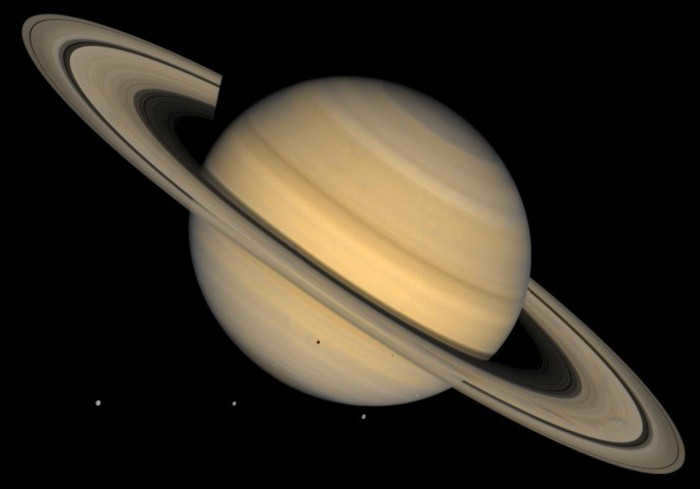
Saturn, similar to other gas giants, is primarily composed of hydrogen. It maintains constant winds, frequent lightning, and even experiences occasional auroras.
Uranus and Neptune
Both Uranus and Neptune possess a dense layer of clouds consisting of hydrogen, methane, and helium. Interestingly, Neptune holds the distinction for having the fastest surface winds, reaching speeds of up to 700 kilometers per hour!
Pluto
Pluto, the dwarf planet, is a fascinating celestial object in our solar system.
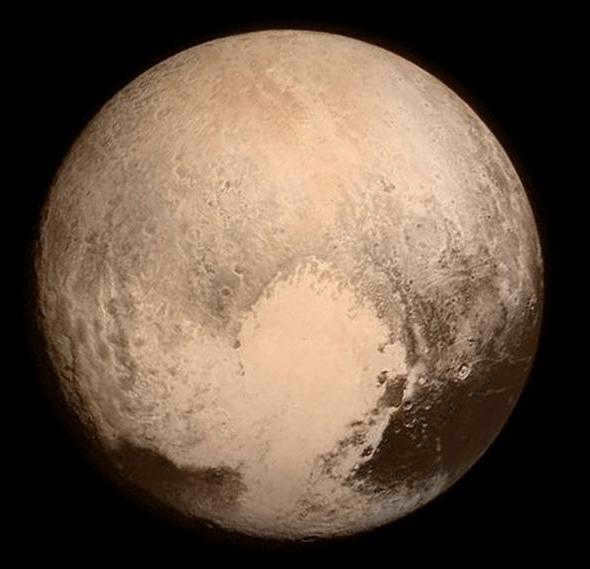
When discussing planets without atmospheres, it is hard not to bring up Pluto. Although it is not as close to Mercury, its gas envelope is about 7,000 times less dense compared to Earth’s. Nevertheless, Pluto remains the most distant and least explored planet. There is still much to be discovered about it, but it is known to have methane present.
How to Generate an Environment for Life
The concept of establishing human settlements on other planets continues to captivate scientists, especially the idea of terraforming – creating habitable conditions without the need for protective measures. While still in the realm of theory, it is entirely possible to develop an atmosphere on Mars. This process is intricate and involves multiple stages, but the fundamental concept is as follows: introduce bacteria onto the surface, which will generate additional carbon dioxide, leading to an increase in the density of the gas envelope and a rise in temperature. Subsequently, the polar glaciers will begin to melt, and due to the heightened pressure, water will not evaporate completely. This will eventually result in rainfall, transforming the soil into a suitable environment for plant growth.
Thus, we have explored the planet with an extremely limited atmosphere.
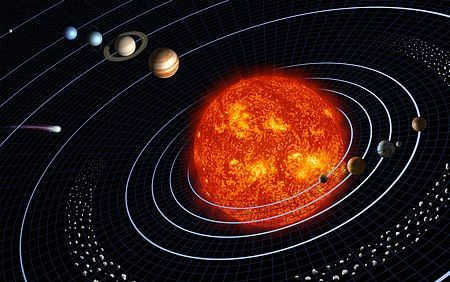
Comparisons of escape velocities at different surface temperatures are depicted in the graphs for various celestial bodies within the solar system, indicating the gases that are preserved. The celestial bodies are accurately represented in size, and their corresponding data points are illustrated by the black dots in the center.
Studying the atmospheres of extraterrestrial bodies is an area of research that is currently being explored in both the field of astronomy and for the purpose of gathering information about Earth’s own atmosphere. Apart from our planet, there are numerous other celestial objects within the solar system that possess atmospheres. These include gas giants like Jupiter and Saturn, as well as Mars, Venus, and Titan. Additionally, various moons and other celestial bodies, as well as comets and even the Sun, have atmospheres. There are indications that exoplanets may also have atmospheres. By comparing these different atmospheres to one another and to the atmosphere of Earth, we can enhance our fundamental understanding of atmospheric processes such as the greenhouse effect, aerosol and cloud physics, and atmospheric chemistry and dynamics.
In September 2022, a new organization called the Categorization of Atmospheric Technosignatures (CATS) was established by astronomers. Its main purpose is to compile a comprehensive list of findings from studies conducted on exoplanet atmospheres, specifically focusing on the identification of biosignatures and technosignatures.
- 1 planets
- 1.1 Inner planets
- 1.1.1 Mercury
- 1.1.2 Venus
- 1.1.3 Mars
- 1.2.1 Jupiter
- 1.2.2 Saturn
- 1.2.3 Uranus
- 1.2.4 Neptune
- 2.1 Natural Satellites
- 2.1.1 Moon
- 2.1.2 Titan
- 2.1.3 Triton
- 3.1 Atmospheric composition
- 3.2 Atmospheric circulation
- 3.3 Winds
- 3.4 Clouds
- 3.5 Precipitation
- 3.6 Abiotic oxygen
- 4.1 Methane
Planets
Inner planets
Excluding Earth, this article focuses on the atmospheres of other planets. To learn about Earth’s atmosphere, please refer to the article “Earth’s Atmosphere”.
Mercury
Mercury, being small in size and having low gravity, does not possess a significant atmosphere. Its atmosphere is incredibly thin and primarily composed of small amounts of helium, along with traces of sodium, potassium, and oxygen. These gases are generated by various sources such as the solar wind, radioactive decay, meteorite impacts, and the disintegration of Mercury’s crust. Due to the planet’s heat, Mercury’s atmosphere is constantly renewing itself as its atoms escape into space.
Venus
Venus is the second planet from the Sun and is the hottest planet in our solar system. Venus is often referred to as Earth’s sister planet because of their similar size and composition. However, Venus has a much different atmosphere than Earth, consisting mainly of carbon dioxide and sulfuric acid clouds. The thick atmosphere creates a greenhouse effect, trapping heat and making Venus the hottest planet.
Venus is also known for its dense atmosphere, which causes a runaway greenhouse effect. This means that the heat from the sun gets trapped in Venus’ atmosphere, causing the planet’s surface temperature to rise to extreme levels. In fact, Venus has an average surface temperature of around 900 degrees Fahrenheit (475 degrees Celsius), making it hotter than Mercury, even though it is farther from the sun.
One interesting feature of Venus is its rotation. Venus rotates on its axis in the opposite direction of most other planets, which means that its sun rises in the west and sets in the east. This retrograde rotation is still not fully understood by scientists.
Venus is also known for its thick cloud cover, which makes it difficult to observe the planet’s surface. However, scientists have used radar imaging to map the surface of Venus and have found evidence of volcanoes, mountains, and vast plains.
Despite its extreme conditions, Venus has been the subject of much scientific study, with numerous spacecraft missions sent to explore the planet. These missions have provided valuable data about Venus’ atmosphere, geology, and climate, helping scientists better understand our neighboring planet.
In conclusion, Venus is a fascinating planet with its extreme temperatures, dense atmosphere, and unique rotation. Although it may not be habitable for humans, it continues to intrigue scientists and spark curiosity about the mysteries of our solar system.
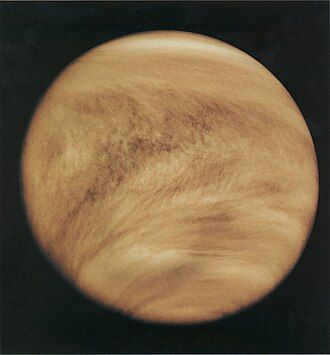
The atmosphere of Venus is primarily made up of carbon dioxide. It also contains trace amounts of nitrogen, hydrogen, sulfur, carbon, and oxygen compounds. Compared to Earth, Venus has a hotter and denser atmosphere, although it is shallower. The greenhouse gases in Venus’s atmosphere heat the lower atmosphere while cooling the upper atmosphere, leading to the formation of compact thermospheres. According to certain definitions, Venus does not have a stratosphere.
The troposphere starts at ground level and goes up to 65 kilometers (where the mesosphere on Earth begins). At the top of the troposphere, the temperature and pressure match those at the Earth’s surface. Near the surface, winds blow at a speed of a few meters per second, but in the upper troposphere, they can reach speeds of 70 m/s or even higher. The stratosphere and mesosphere span from 65 km to 95 km in altitude. The thermosphere and exosphere start at around 95 km and extend all the way to the outermost limit of the atmosphere, which is at an altitude of approximately 220 to 250 km.
On Venus, the air pressure at the surface is about 92 times higher than that on Earth. The abundance of CO2 in the atmosphere leads to a strong greenhouse effect, resulting in a surface temperature of around 470 °C. This makes Venus the hottest planet in the solar system.
Mars
The atmosphere of Mars is extremely thin and primarily composed of carbon dioxide, with small traces of nitrogen and argon. Compared to Earth’s average surface pressure of about 101 kPa, Mars has a much lower pressure, ranging from 0.6-0.9 kPa. As a result, the atmosphere has a significantly lower thermal inertia, leading to strong thermal tides that can cause the total atmospheric pressure to fluctuate by up to 10%. The thin atmosphere also contributes to the planet’s temperature variability. Mars experiences surface temperatures that can reach a maximum of 20 °C (70 °F) in the summer, while in polar winter, temperatures can drop to a minimum of around -140 °C (-220 °F).
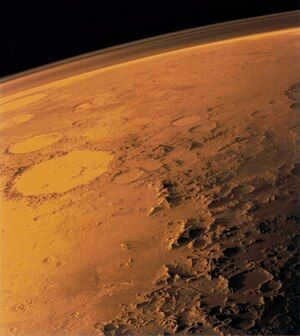
Colin Wilson hypothesized that the observed variations are a consequence of irregularities in the orbit of Mars. William Feldman proposes that the increase in temperature might be attributed to Mars emerging from the ice age. Other scientists contend that the warming could be caused by changes in albedo resulting from dust storms. The study predicts that the planet might continue to warm due to positive feedback.
On June 7, 2018, NASA announced that the Curiosity rover on Mars has identified cyclical seasonal fluctuations in atmospheric methane, in addition to the presence of kerogen and other intricate organic compounds.
Gas giants
The gas giants are the four outer planets in our solar system. They have similar atmospheres, composed mainly of hydrogen and helium. These gases mix with the liquid interior at pressures above the critical pressure, creating a seamless transition between the atmosphere and the planet’s body.
Jupiter
Jupiter, the largest planet in our solar system, is known for its massive size and vibrant atmosphere. This gas giant is named after the Roman king of the gods and is often referred to as the “King of the Planets.” Its colorful bands of clouds, including the famous Great Red Spot, create a mesmerizing sight. Jupiter’s strong magnetic field also generates intense auroras at its poles. With its numerous moons, including Ganymede, the largest moon in the solar system, Jupiter is a fascinating celestial body that continues to intrigue astronomers and space enthusiasts alike.
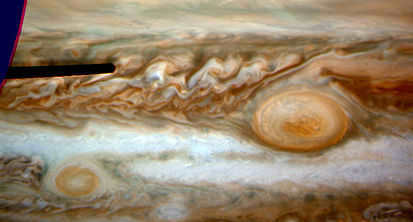
Jupiter’s upper atmosphere is made up of approximately 75% hydrogen and 24% helium in terms of mass, with the remaining 1% consisting of various other elements. The interior of the planet contains denser materials, resulting in a mass distribution of about 71% hydrogen, 24% helium, and 5% other elements. Within the atmosphere, there are small amounts of methane, water vapor, ammonia, and silicon-based compounds. Additionally, traces of carbon, ethane, hydrogen sulfide, neon, oxygen, phosphine, and sulfur can be found. The outermost layer of the atmosphere is composed of frozen ammonia crystals, potentially covered by a thin layer of water.
Jupiter has a cloud layer that spans about 50 kilometers. The clouds consist of ammonia crystals and potentially ammonium hydrosulfide. These clouds are situated in the tropopause and create bands of varying latitudes referred to as tropical regions. These regions are further divided into lighter zones and darker belts. The interaction between these conflicting circulation patterns results in storms and turbulence. One of the most well-known features of this cloud layer is the Great Red Spot, a long-lasting anticyclonic storm situated 22° south of the equator that is larger than the Earth itself. In the year 2000, a similar atmospheric feature formed in the southern hemisphere, resembling the Great Red Spot but smaller in size. This feature was named Oval BA and earned the nickname Red Spot Junior.
Recent observations of the storm known as “Red Spot Junior” on Jupiter have raised the possibility that the planet is experiencing a period of global climate change. Scientists believe that this storm is part of a larger climate cycle that occurs approximately every 70 years. During this cycle, cyclonic and anticyclonic vortices in Jupiter’s atmosphere form quickly and then slowly merge and erode. These vortices play a crucial role in facilitating heat exchange between the planet’s poles and equator. However, when they are eroded to a certain extent, heat exchange is significantly reduced, leading to a shift in regional temperatures. This shift can be as much as 10 K, with the poles cooling and the equator warming. As a result, the atmosphere becomes destabilized, giving rise to new vortices.
Saturn
The composition of Saturn’s outer atmosphere is mainly hydrogen (approximately 93.2%) and helium (6.7%). It also contains small amounts of ammonia, acetylene, ethane, phosphine, and methane. Similar to Jupiter, Saturn’s upper clouds are composed of ammonia crystals, while the lower clouds consist of either ammonium hydrosulfide (NH4SH) or water.
The atmosphere of Saturn shares similarities with that of Jupiter. It exhibits a banding pattern resembling Jupiter and occasionally displays long-lasting ovals caused by storms. The Great White Spot, a transient phenomenon similar to Jupiter’s Great Red Spot, forms approximately every 30 years. The most recent observation of this event was in 1990. However, Saturn’s storms and band structures are less prominent and active compared to Jupiter due to the presence of an ammonia haze in Saturn’s troposphere.
Saturn’s atmosphere possesses several unique characteristics. The velocity of its winds is among the highest in our solar system, as evidenced by Voyager data indicating a maximum speed of 500 m/s in an easterly direction. Additionally, Saturn stands as the sole celestial body with a warm polar vortex, and it is the solitary planet, apart from Earth, where eye-wall clouds in the guise of hurricane-like formations have been documented.
Uranus
The atmosphere of Uranus consists mainly of gases and different ices. It is primarily composed of 83% hydrogen, 15% helium, 2% methane, and small amounts of acetylene. Uranus, like Jupiter and Saturn, has a cloud layer with bands, but it is not easily visible without improved visualization of the planet. Unlike the larger gas giants, the upper cloud layer of Uranus has very low temperatures, reaching as low as 50 K, resulting in the formation of clouds made of methane instead of ammonia.
The reason why Uranus has less storm activity in its atmosphere compared to Jupiter or Saturn is because its atmosphere is filled with methane and acetylene fog, giving the planet a gentle, pale blue appearance. In 1997, the Hubble Space Telescope captured images of storm activity in the newly-formed section of Uranus’ atmosphere after its 25-year winter. The limited occurrence of storms on Uranus may be attributed to its absence of an internal energy-generating mechanism, which sets it apart from other gas giants.
Neptune
Neptune is the eighth and farthest known planet from the Sun in the Solar System. It is the fourth-largest planet by diameter and the third-largest by mass. Among the giant planets in the Solar System, Neptune is the most dense. Neptune is 17 times the mass of Earth and is slightly more massive than its near-twin Uranus, which is 15 times the mass of Earth and slightly larger than Neptune.
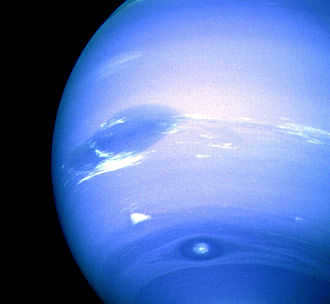
A vast dark spot (upper area), Scooter (middle white cloud), and Wizard's Eye / Dark Spot 2 (lower part).
The atmosphere of Neptune resembles that of Uranus. It consists of approximately 80% hydrogen, 19% helium, and 1.5% methane. However, the level of weather activity on Neptune is significantly higher, and its atmosphere appears much bluer compared to Uranus. The upper layers of the atmosphere have temperatures of around 55 K, leading to the formation of methane clouds in the troposphere, which give the planet its deep blue color. Temperatures gradually increase as you descend deeper into the atmosphere.
Neptune experiences highly dynamic weather patterns, including the most powerful winds in the entire solar system, which are believed to be fueled by internal heat circulation. The equatorial region of Neptune typically sees winds reaching speeds of approximately 350 m/s (equivalent to the speed of sound at room temperature on Earth, which is 343.6 m/s), while storm systems in Neptune’s atmosphere can reach wind speeds of around 900 m/s. Numerous large storm systems have been observed on Neptune, such as the Great Dark Spot, a cyclonic storm system spanning the size of Eurasia, Scooter, a cluster of white clouds located south of the Great Dark Spot, and Magic Eye/Dark Spot 2, a southern cyclonic storm.
Since 1980, the luminosity of Neptune, the furthest planet from Earth, has experienced an increase. According to Hammel and Lockwood, this change in brightness is closely related to Neptune’s stratospheric temperature. While they did not find any statistically significant correlation with solar variations, they propose that the brightness alteration is composed of both a solar variation component and a seasonal component. They anticipate that further observations of brightness in the upcoming years will help resolve this issue. Specifically, they predict that the change in subsolar latitude will manifest as a flattening and subsequent decrease in brightness, while the solar forcing will result in a flattening followed by a renewed rise in brightness.
Other Celestial Bodies in the Solar System
Moon-like Objects Orbiting Planets
There are ten natural satellites in the solar system that are known to have atmospheres. These satellites are Europa, Io, Callisto, Enceladus, Ganymede, Titan, Rhea, Dione, Triton, and the Moon of Earth. Among them, Ganymede and Europa have very thin atmospheres composed mainly of oxygen. It is believed that these atmospheres are formed by the radiation that splits the water ice on the surface of these satellites into hydrogen and oxygen. Io, on the other hand, has an extremely thin atmosphere primarily consisting of sulfur dioxide. This is a result of the volcanism and the sunlight-induced sublimation of surface sulfur dioxide deposits. Enceladus has a variable and extremely thin atmosphere composed mainly of water vapor, nitrogen, methane, and carbon dioxide. These gases are ejected from the Moon’s interior through cryovolcanism. Callisto’s atmosphere is also extremely thin, consisting mostly of carbon dioxide. It is believed that this atmosphere is replenished by the sublimation of surface sediments.
Luna
Saturn’s Moon
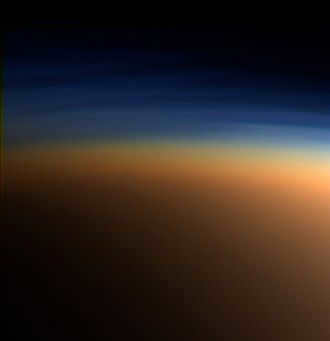
Titan’s surface features are obscured in the visible wavelength range due to the presence of an opaque cloud layer in its atmosphere. The neighboring image shows a haze that plays a role in the Moon’s anti-steam effect and also lowers the temperature by reflecting sunlight away from the satellite. The dense atmosphere of Titan acts as a barrier, preventing light of most visible wavelengths from reaching the surface from the Sun and other sources.
Triton
Triton, the largest moon of Neptune, possesses a thin nitrogen atmosphere containing a small quantity of methane. The atmospheric pressure on Triton measures approximately 1 Pa. The surface temperature is at minimum 35.6 K, with a nitrogen atmosphere in balance with the nitrogen ice present on Triton’s surface.
From 1989 to 1998, Triton experienced a 5% increase in its absolute temperature. A comparable rise in temperature on Earth would equate to a temperature surge of approximately 11 °C (20 °F) over a span of nine years. “Triton has been undergoing a period of global warming since at least 1989. In terms of percentage, this marks a substantial increase,” stated James L. Elliot, the author of the report.

